Los Angeles. Part Two.
The Arts District, Downtown, and Angelino Heights
The only sunny day in Los Angeles fell on January 1st. Therefore, the author had to get up at 5 a.m. after New Year’s and go out to shoot the city.
Dawn was just beginning, and the homes of ordinary Americans in the suburb of Panorama City were still adorned with New Year’s garlands.
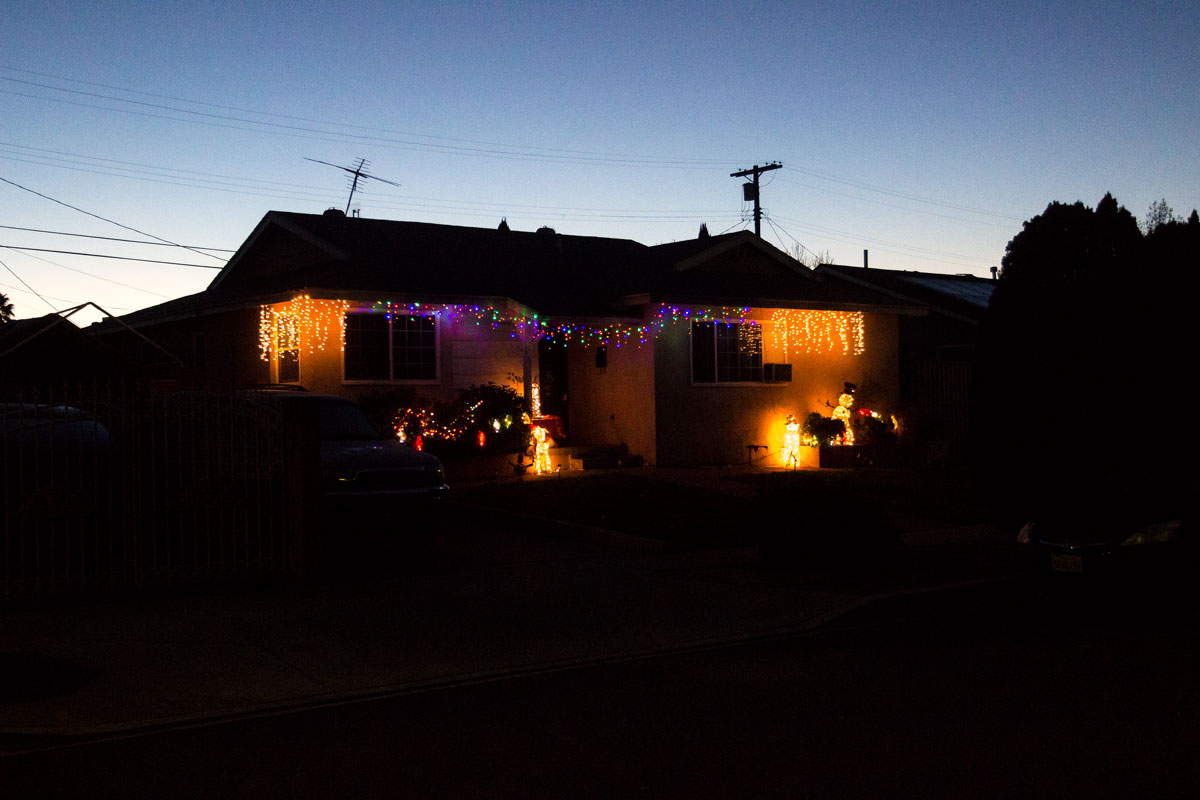
The bus arrived on schedule and was far from empty. Several sleepy Mexicans with a visibly unhappy expression were heading somewhere for work.
American buses are similar to those in Russia: somewhat dirty, worn-out, and not very comfortable.

A distinctive feature is a string stretched across the entire cabin, which needs to be pulled to request a stop. This legacy has been inherited from trams of the early twentieth century.

Bike racks are often installed at the front of buses. You need to secure your bicycle on a special bracket and purchase an additional ticket.

After an hour and a half of travel, the bus finally reached the nearest subway station. The entrance to American subways is always different, often it’s some kind of arch or glass canopy.
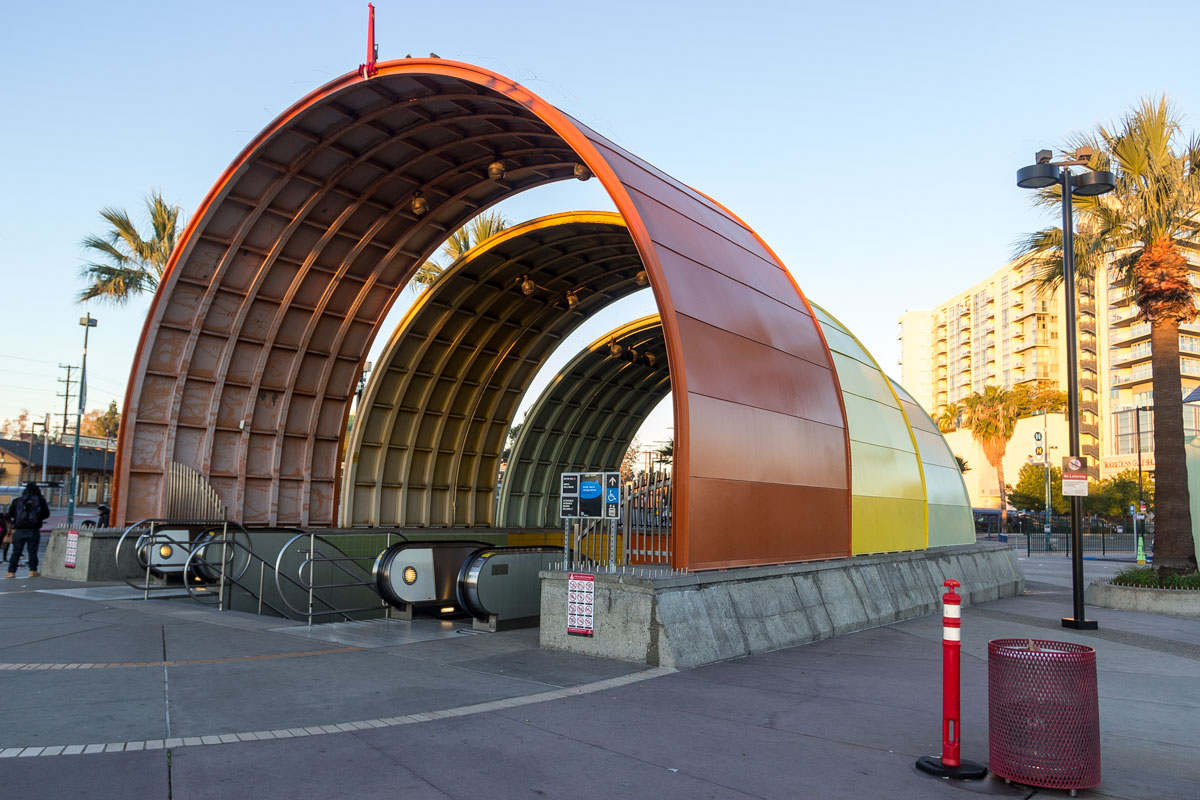
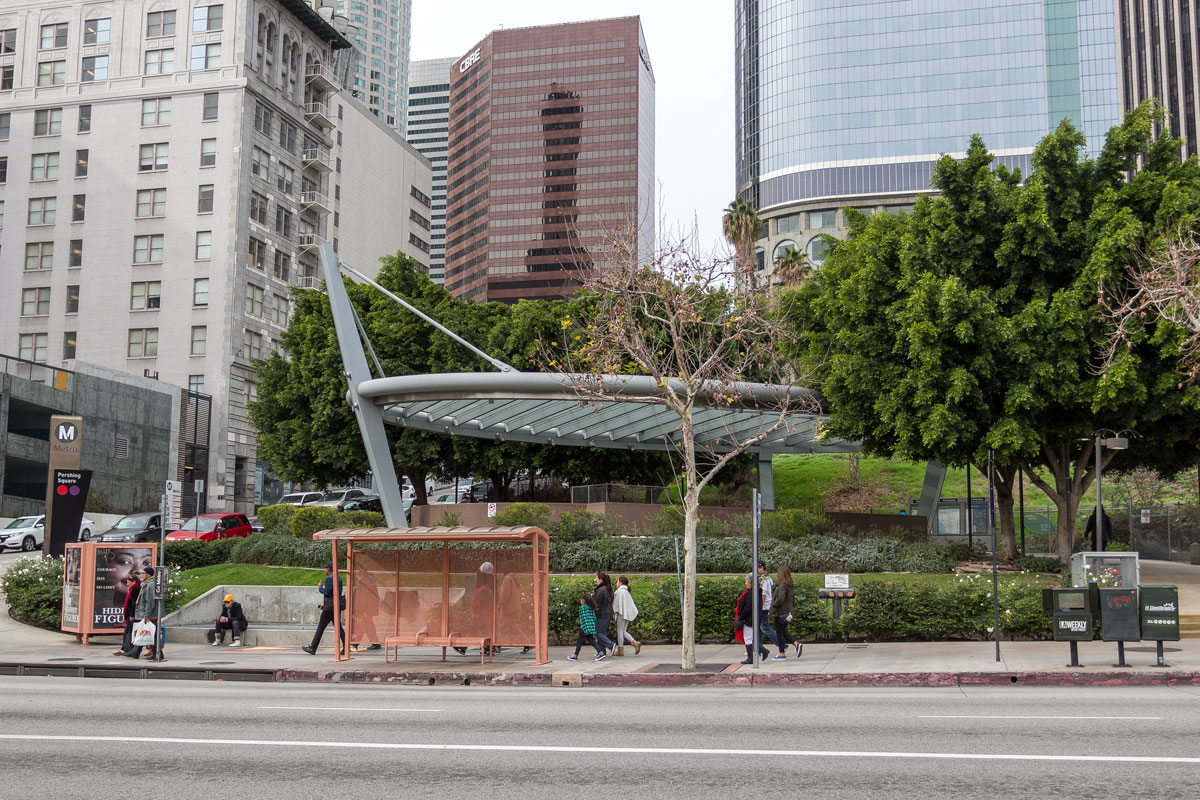
Some stations have paid bike parking with a key. Such attention to bicycles is unexpected since the USA is not generally perceived as a bicycle-friendly country.
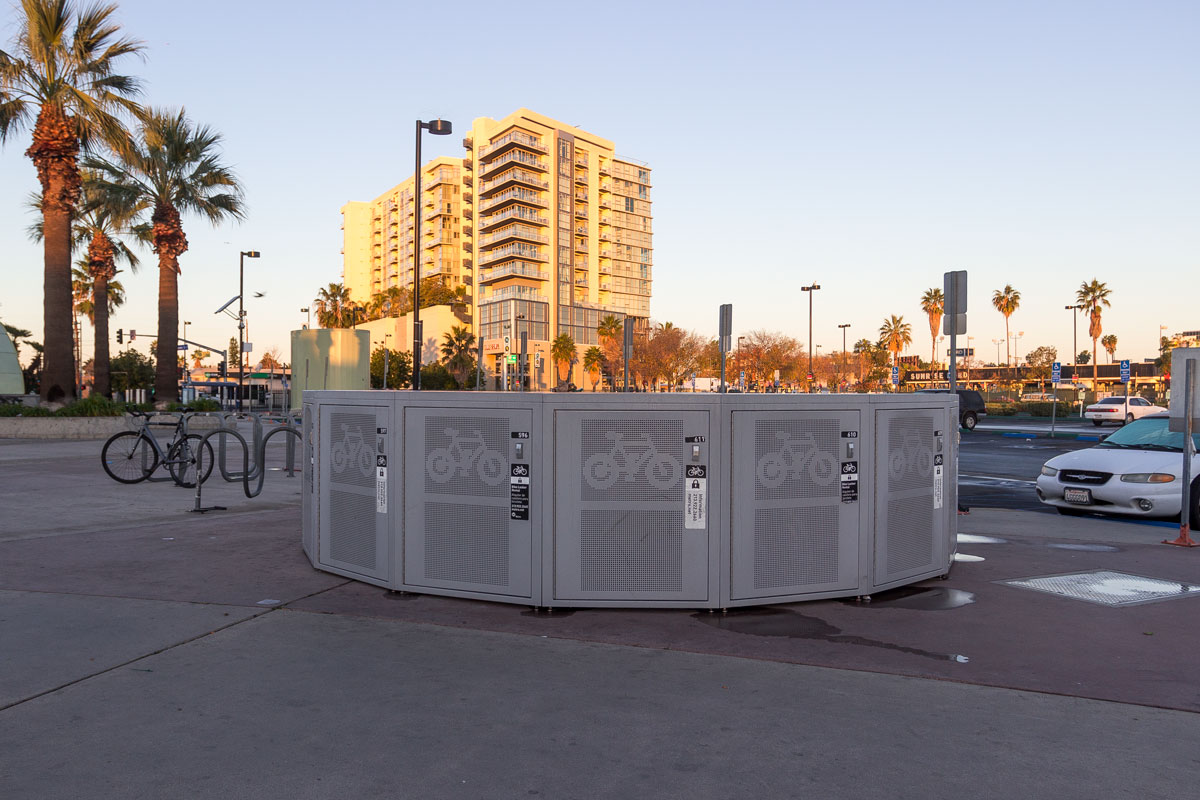
The subway itself turned out to be quite clean. Stories about leaky pipes, rusty trains, and giant rats are all about New York. Los Angeles has a decent subway system.

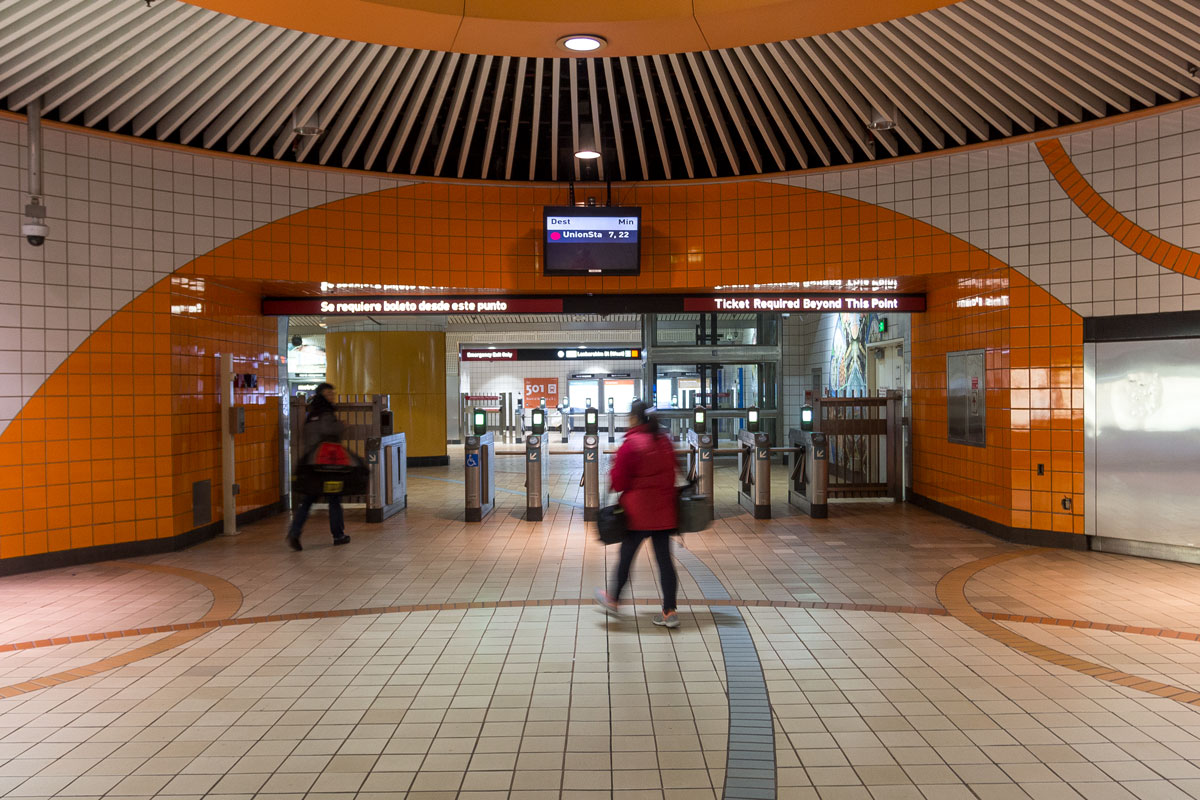


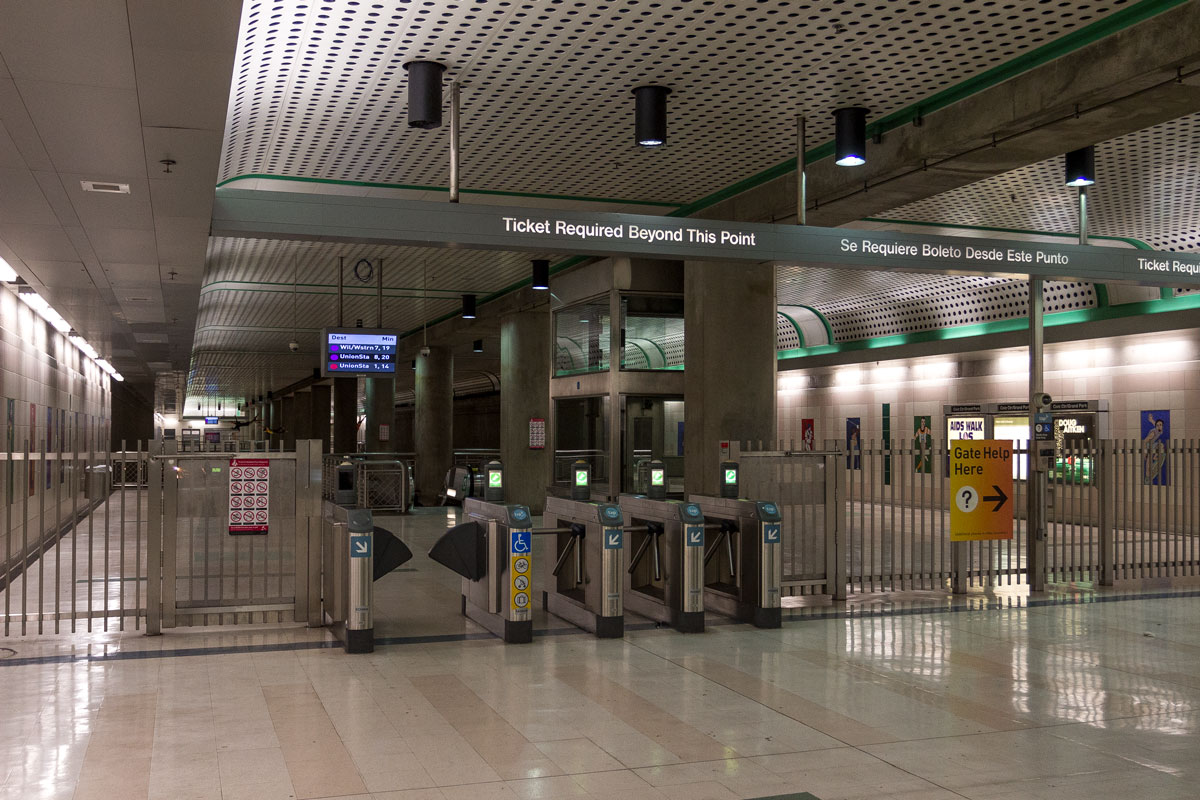
After another half an hour of travel, the subway train finally reached the first destination point — the central city station. It turned out to be completely empty.
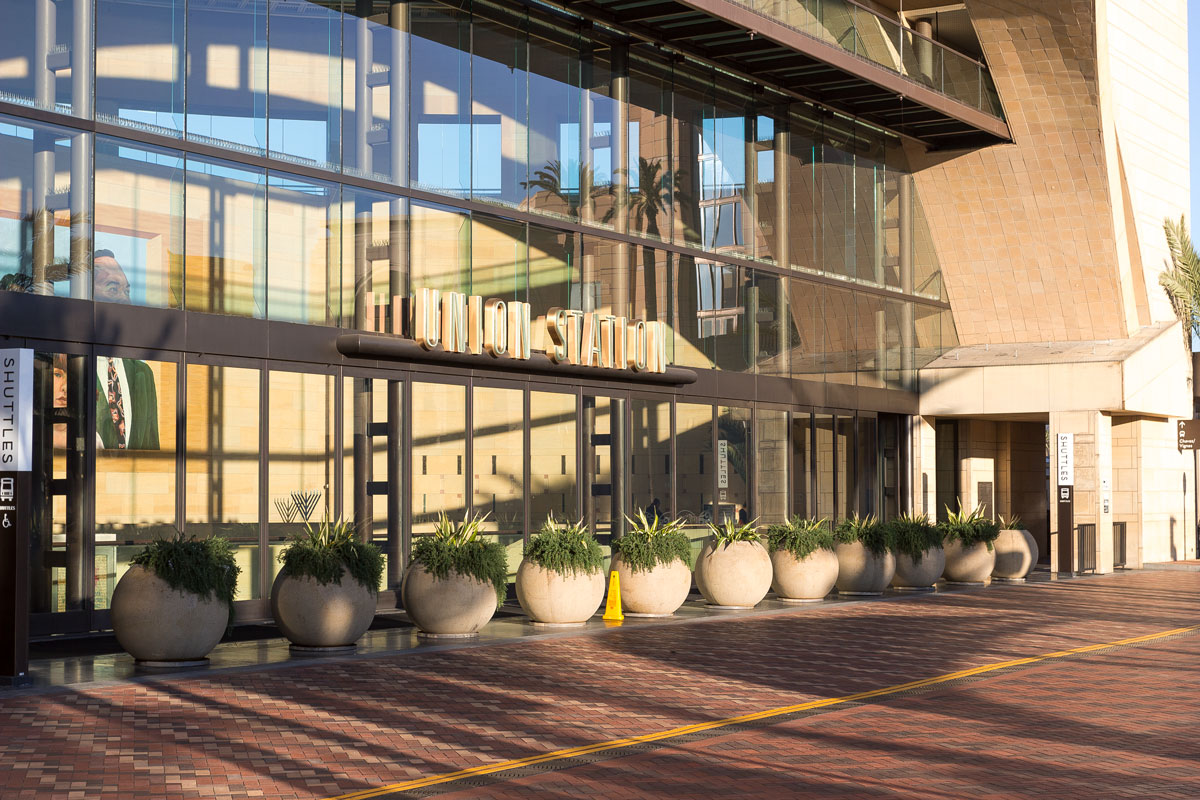
Olvera, the oldest street in Los Angeles, was also empty. American cities, in general, are not particularly historic, so there is nothing much to see here anyway. It seems like there should be a fair or something.

On the approaches to Downtown, right across from the government buildings, tents were still set up where homeless people slept, reminding us of the unfortunate fate of Skid Row’s population.
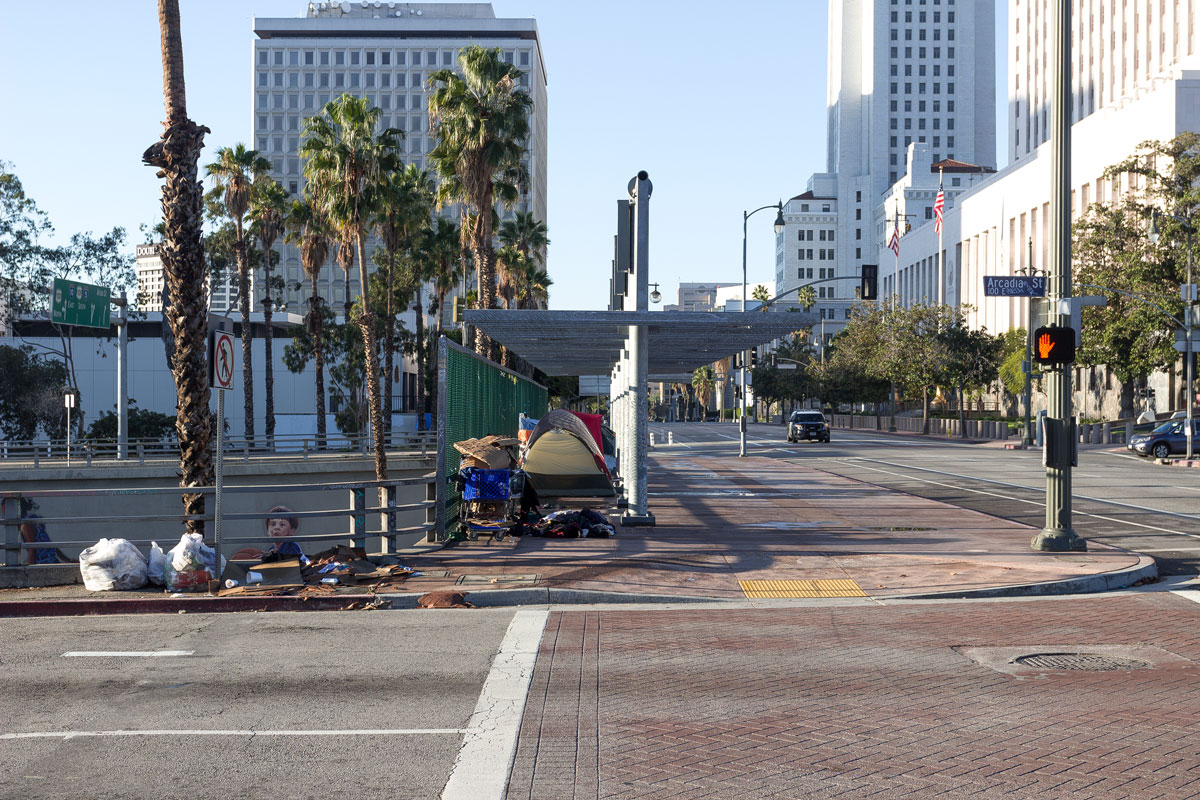
The whole of Los Angeles was completely deserted on the morning of January 1st.

⁂
It is very challenging to write about Los Angeles. A city of such size is impossible to describe coherently. Between interesting places, there are kilometers of homogeneous residential development, and seamlessly depicting the hour-long transitions between neighborhoods is simply impossible.
Therefore, the story about this city will be divided into sections. But that’s actually a good thing because Los Angeles is visited in fragments, with hours-long intervals of travel by subway or bus.
There is no coherence in this city, and there won’t be any in the story.

Arts district
Not far from downtown LA, there is an Arts district. It can hardly be called a Mecca of street art, but you can find several decent works here.
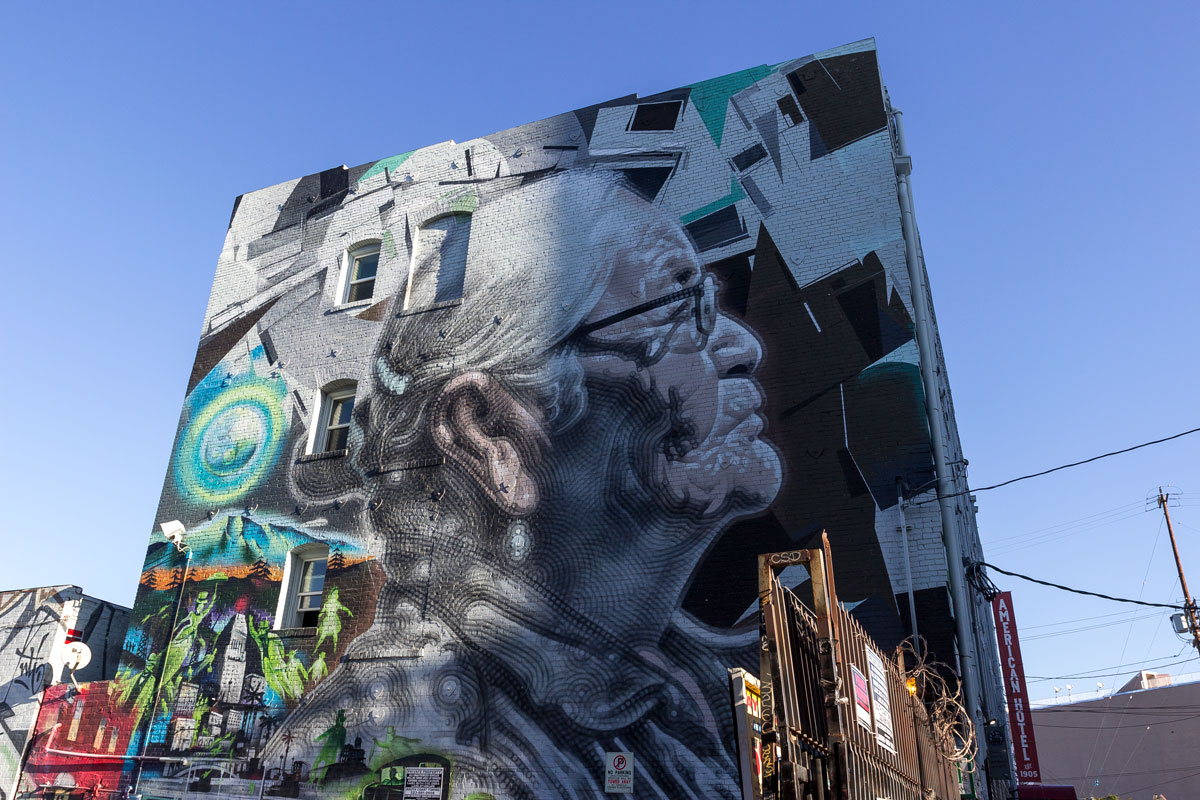
More than half of the effect is created not by drawings but by elements of urban infrastructure. Lampposts, road signs, plaques, asphalt and road markings, wires — without all this industrial medley, the simple works of American street artists would not deserve such attention.
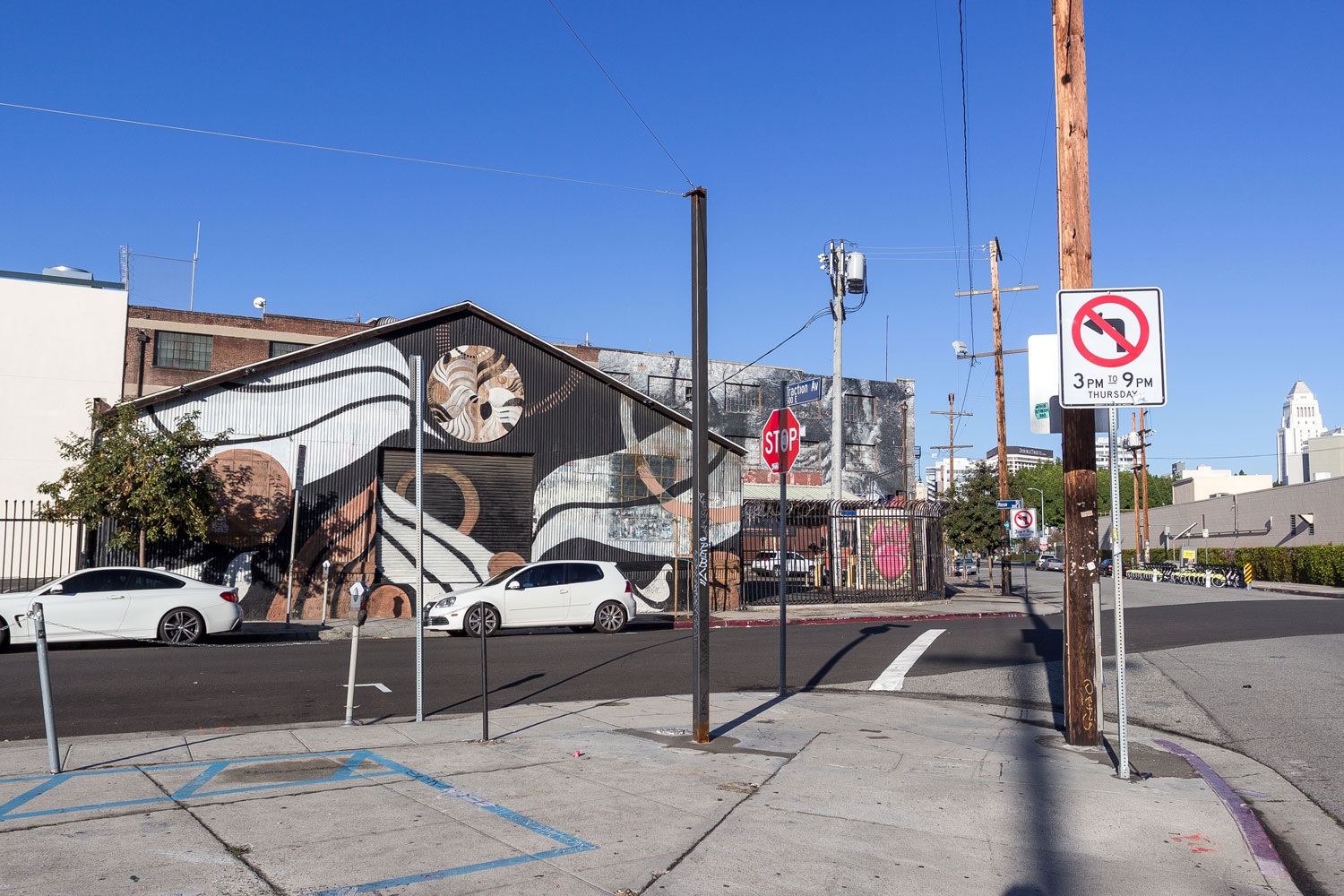
From the district, you can enjoy one of the best views of downtown: skyscrapers rising from somewhere amidst the semi-rural chaos.
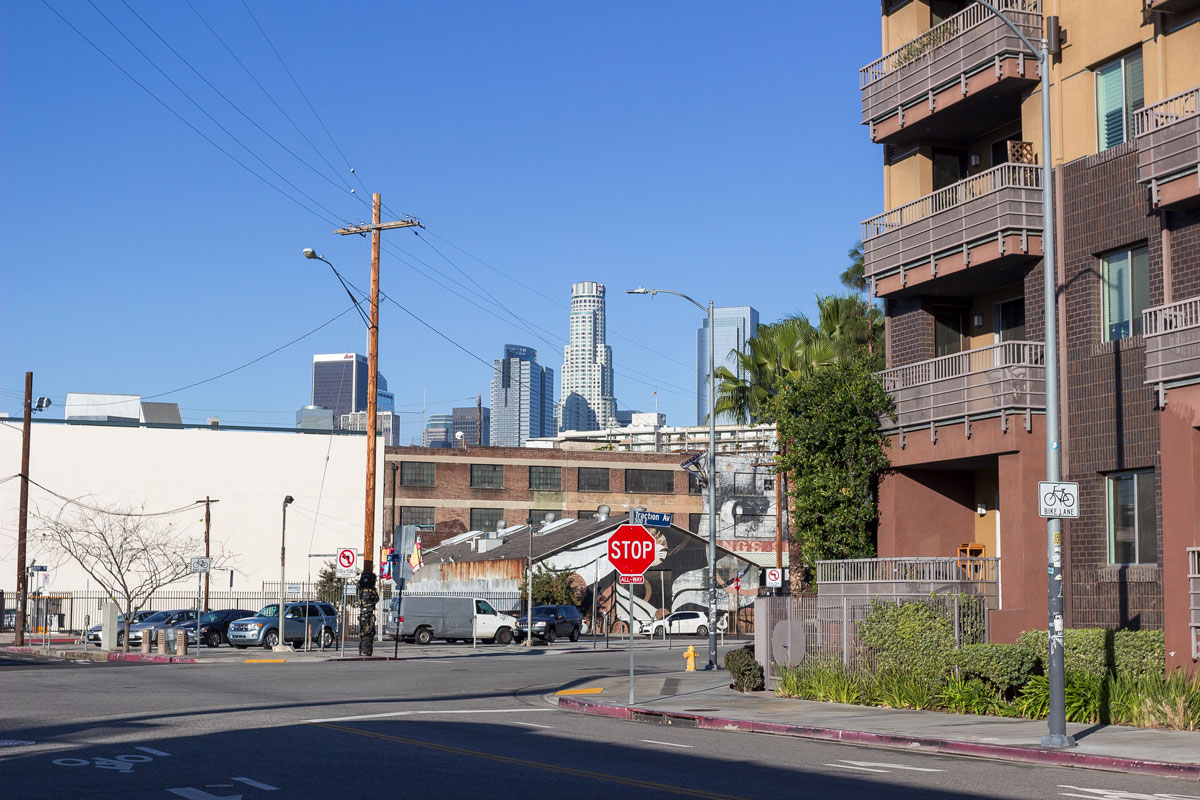
“Save Detroit.”
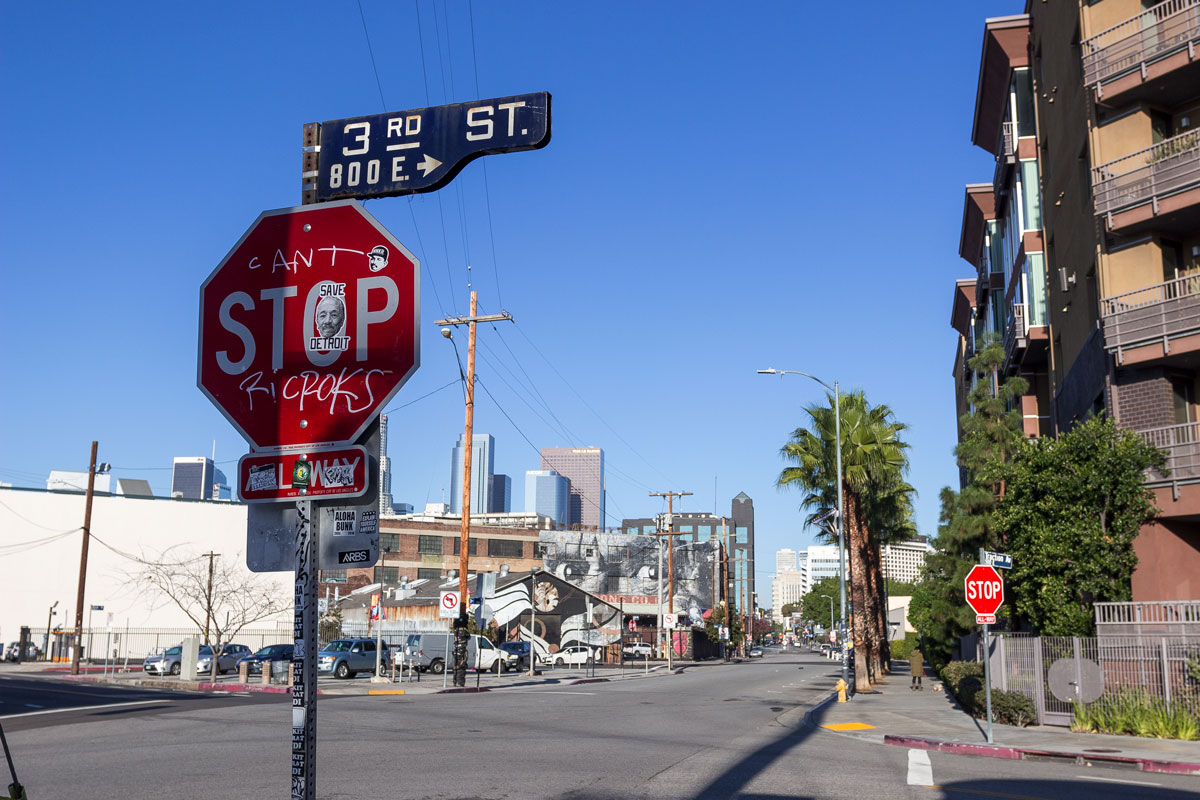
“Jesus loves you.”
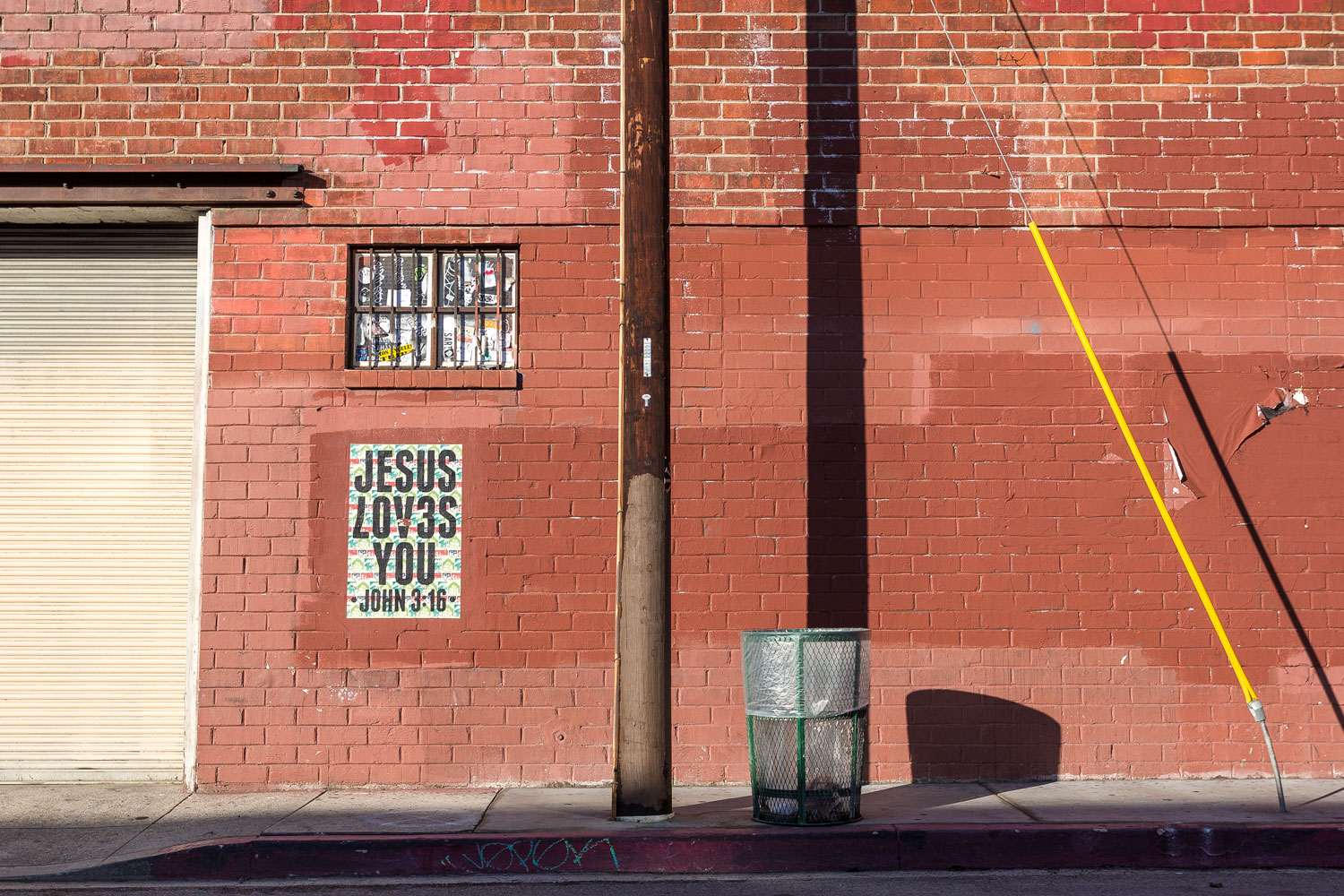
There used to be much more artwork in the district. Maps even marked a route highlighting the coolest graffiti.
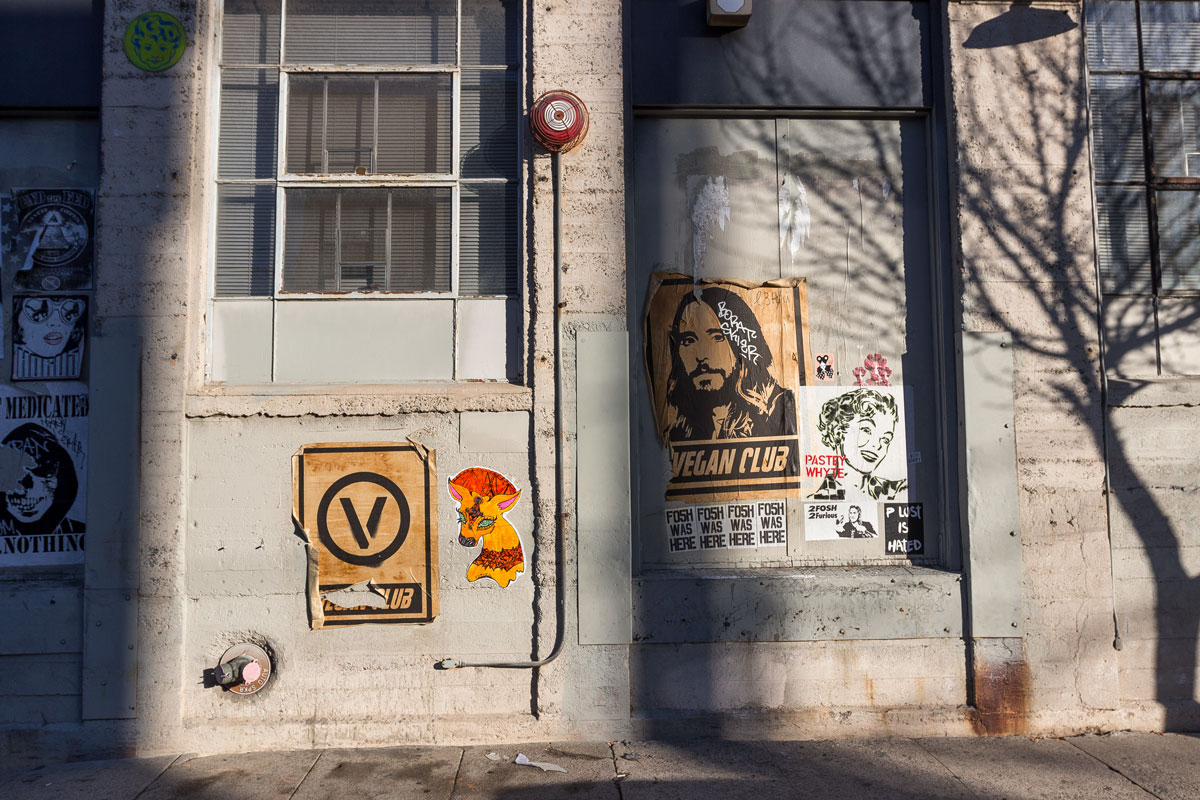
More than half of the markings on this route led nowhere. Municipal services have erased a significant number of drawings.
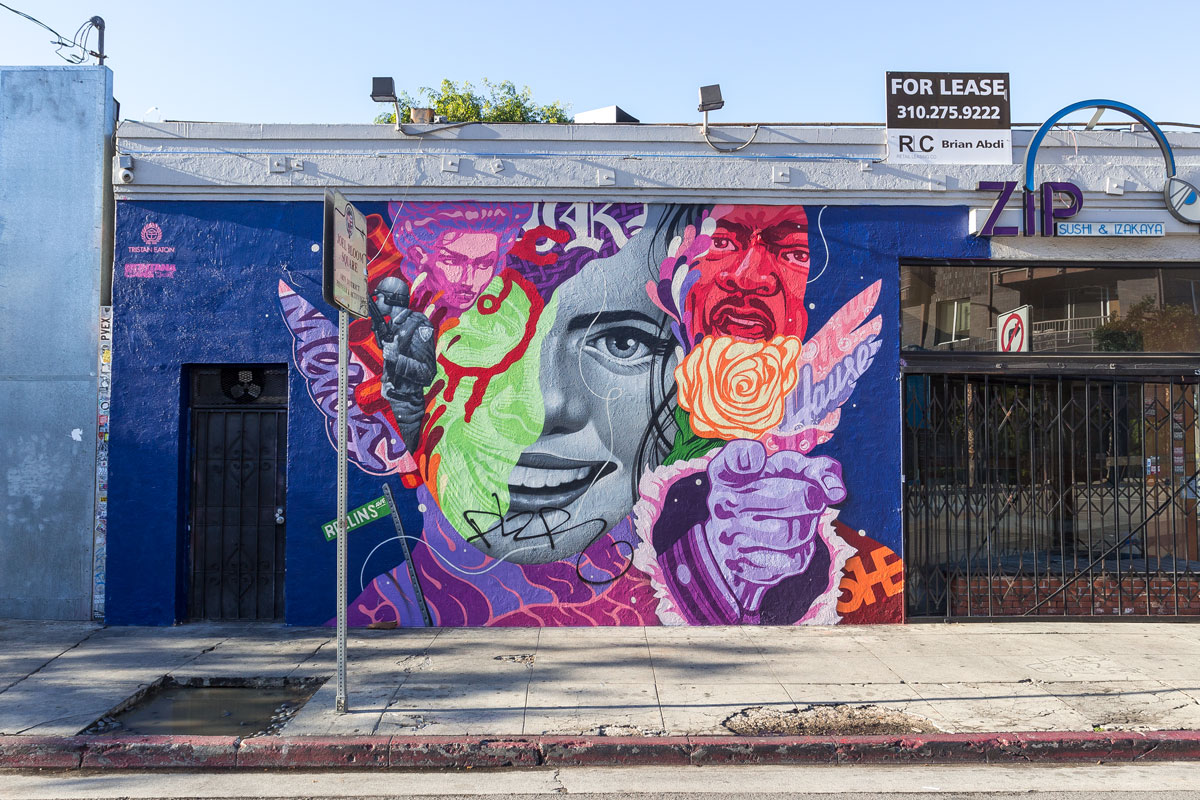
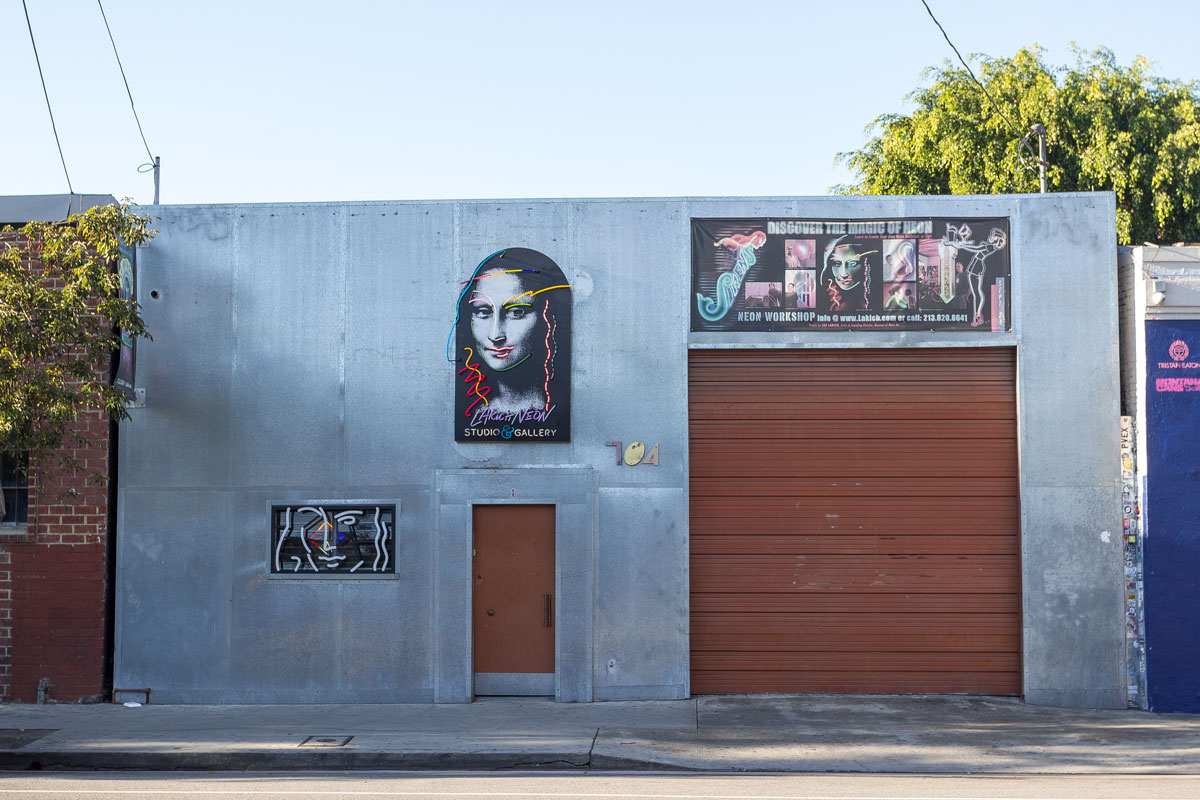
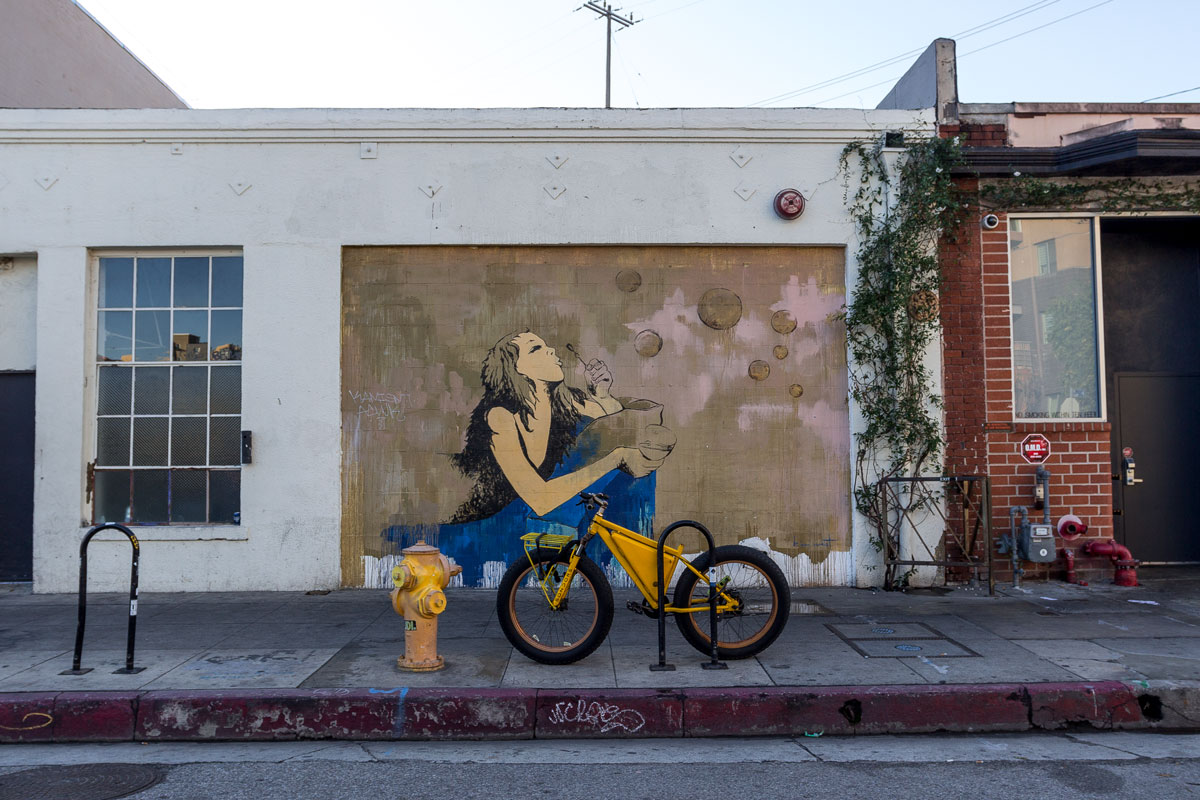
In the Arts district, one can find perhaps the most hipster cafes with rare, delicious food that is uncommon in America. This is just an assumption. It was not possible to check as it was still the morning of January 1st.
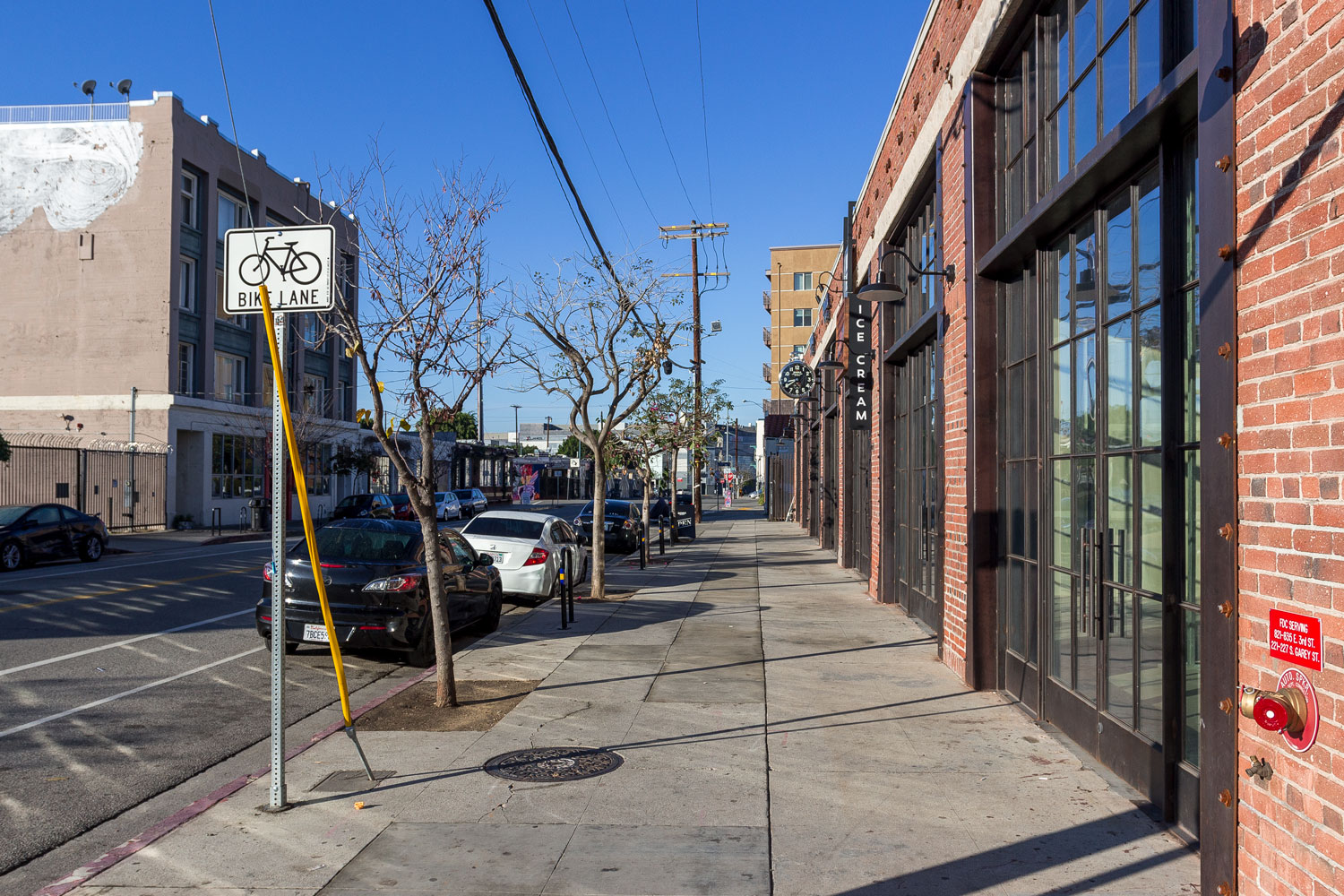
On the way from the Arts district to downtown, one comes across a multi-unit residential development in the “Little Tokyo” area. It is rare in the USA, and such buildings are called condominiums here.
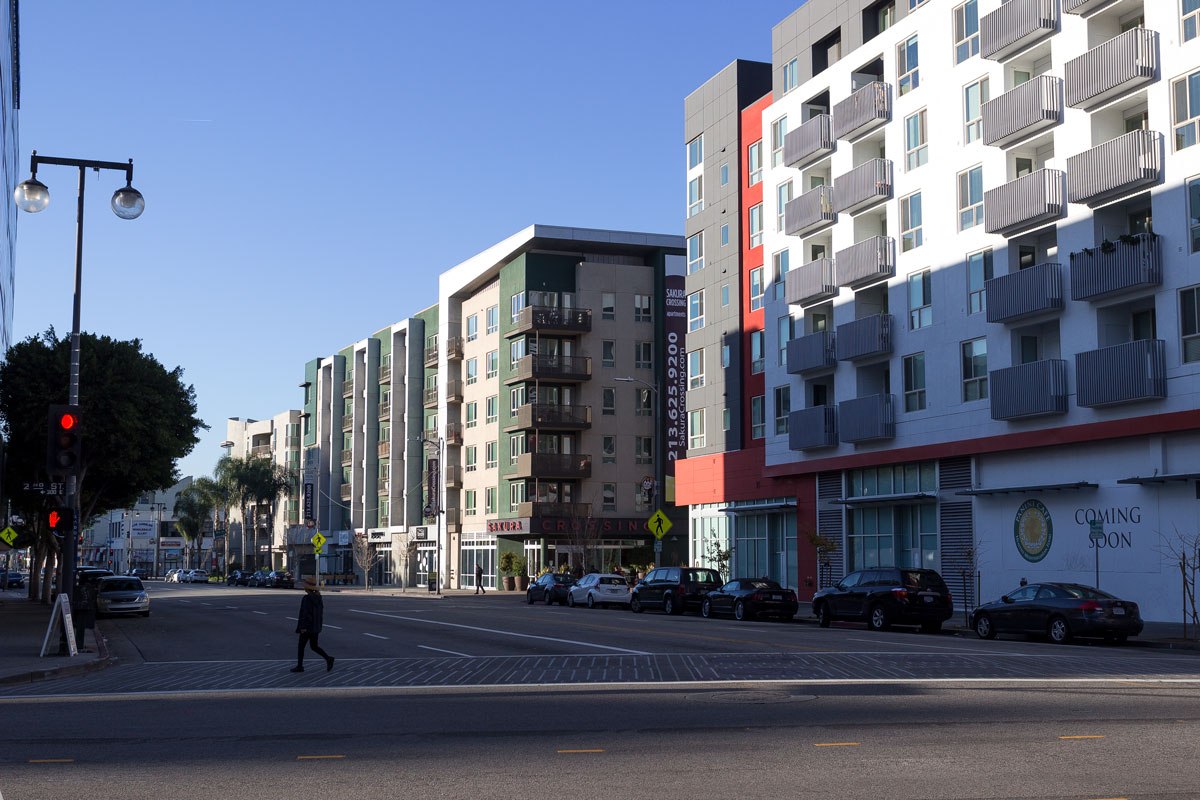
Usually, condominiums look much worse and are considered high-rise ghettos, for example, in New York. So this is a good neighborhood.
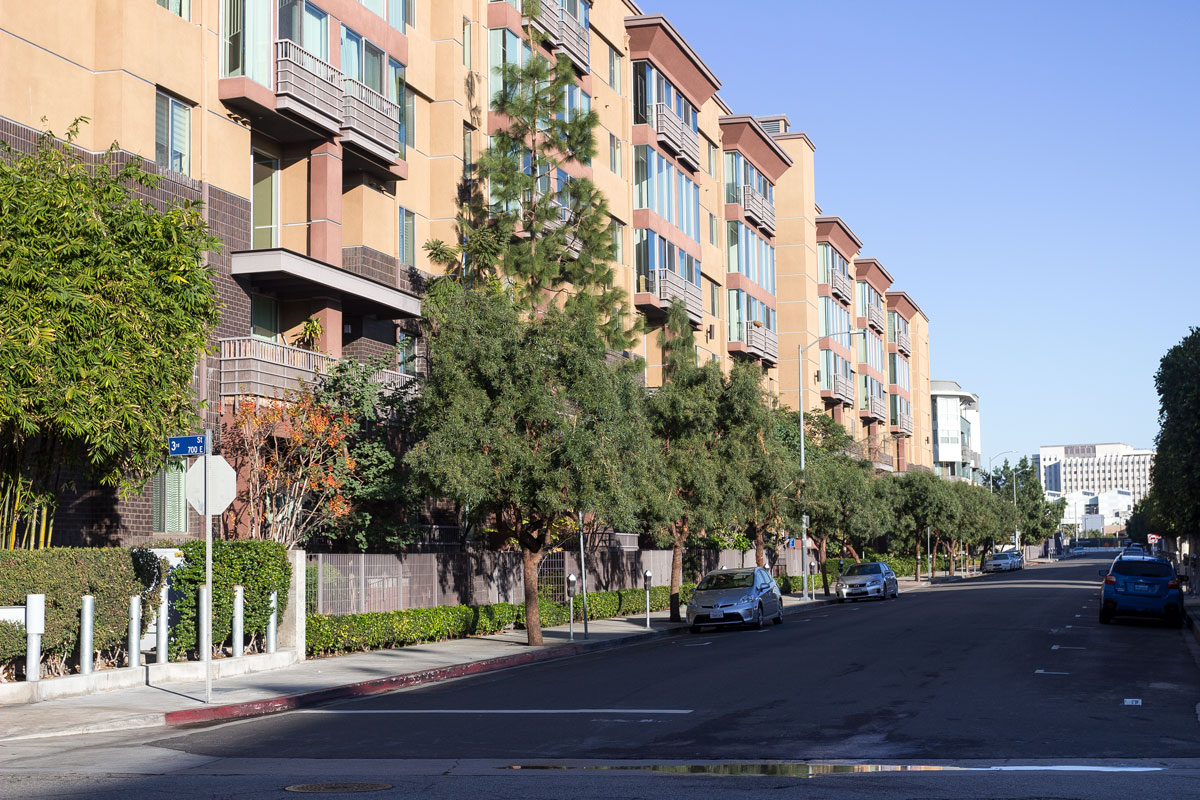
Skyscrapers are gradually getting closer. The Arts district is very close to Skid Row. Just be careful not to accidentally turn there, the slums are located just around the left turn.
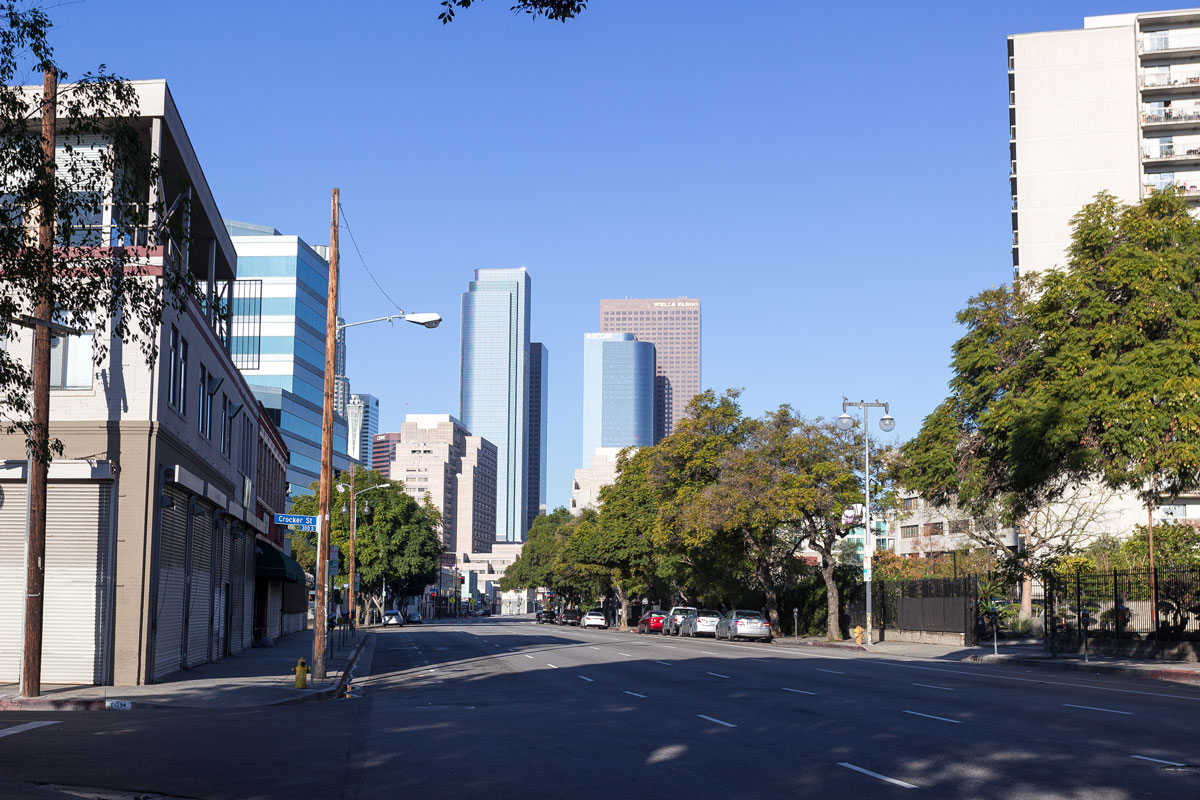

Downtown
Look! I’m standing in the middle of the downtown LA highway, and I wasn’t flattened by a car because all the streets are empty.
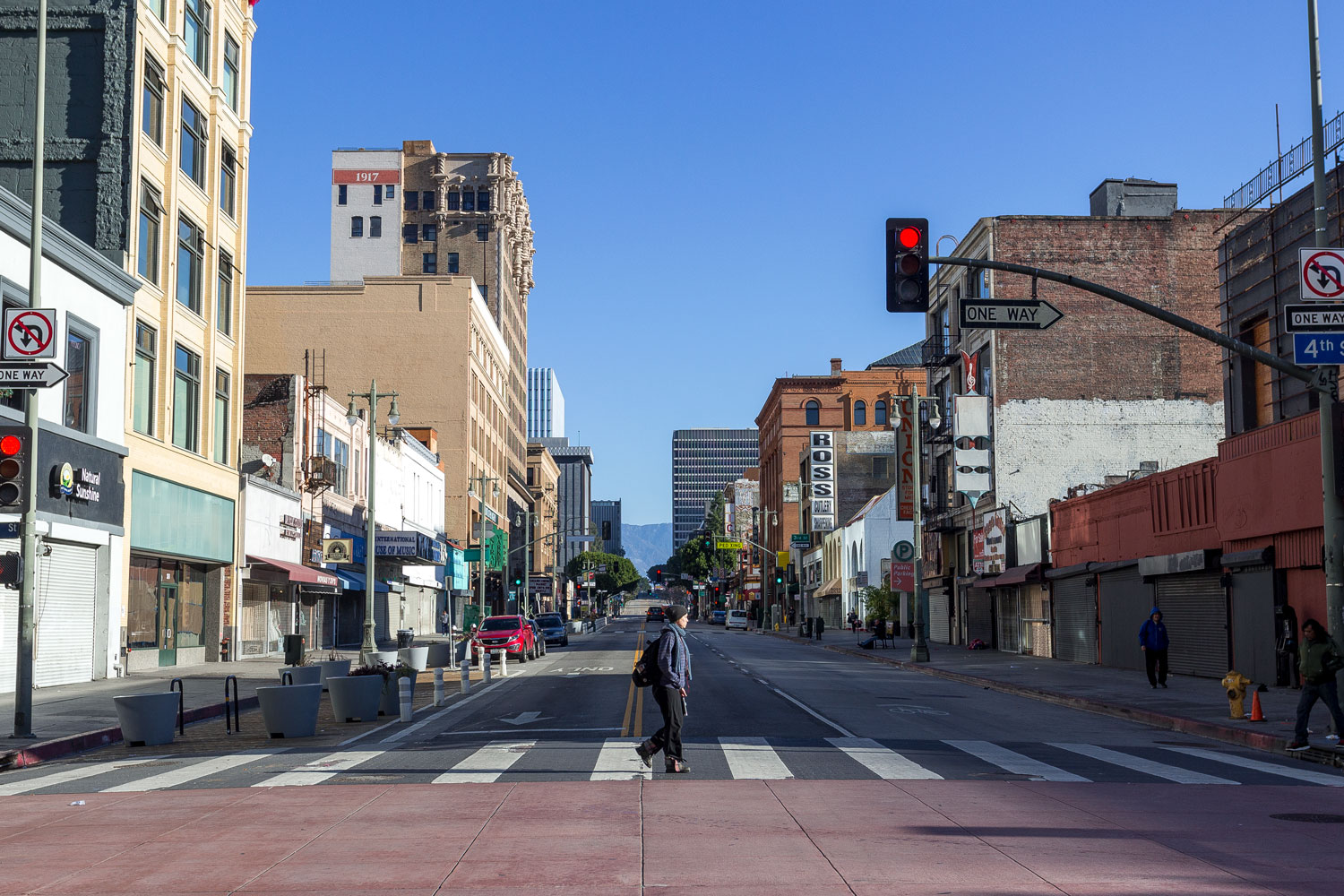
There is absolutely nothing to do downtown. It’s difficult to accept, especially if you love skyscrapers.
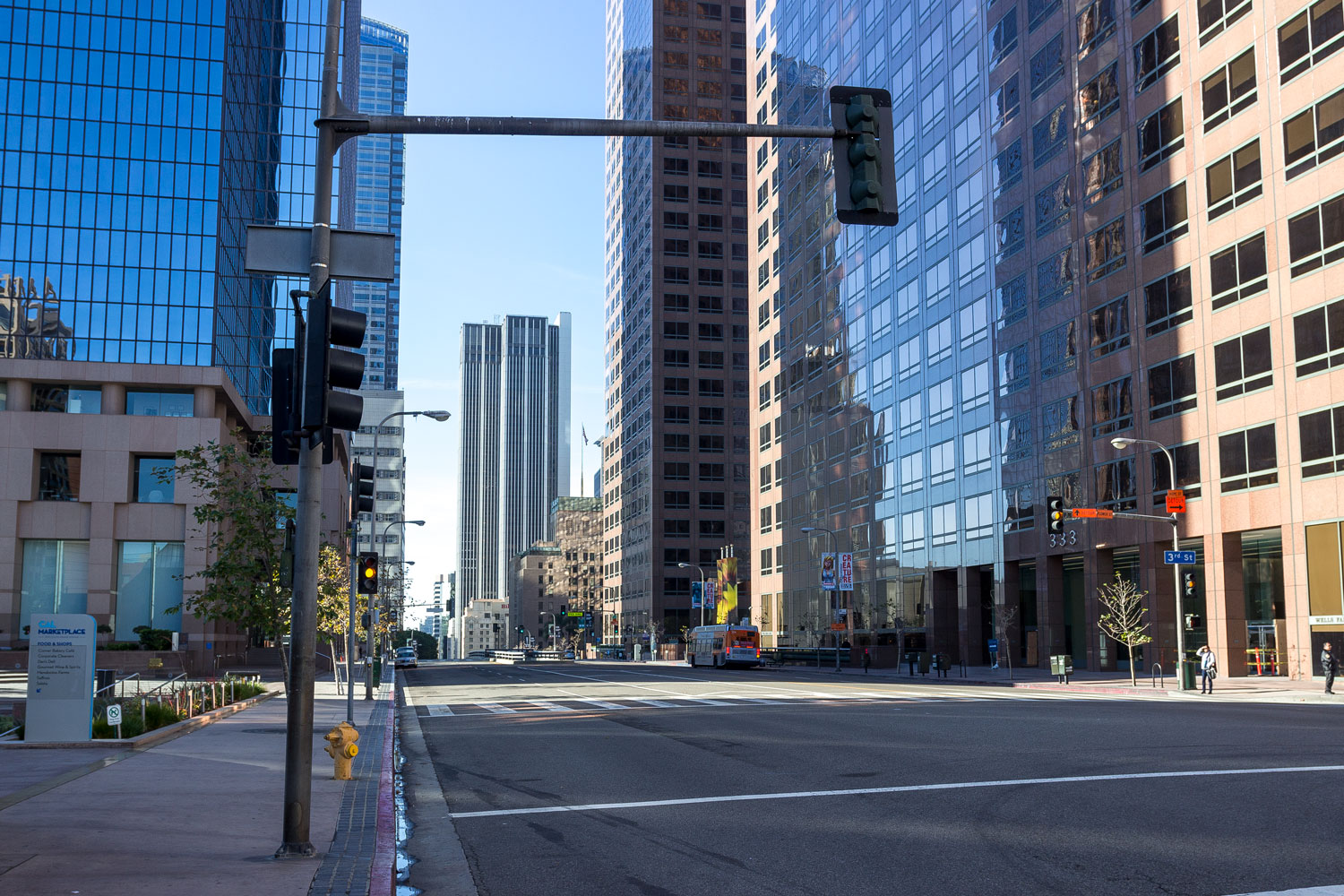
Los Angeles skyscrapers are strange. Just a little more, and I would say that they are as “plastic” and unreal as in Saudi Arabia, but there is still something about them that carries the essence of America.
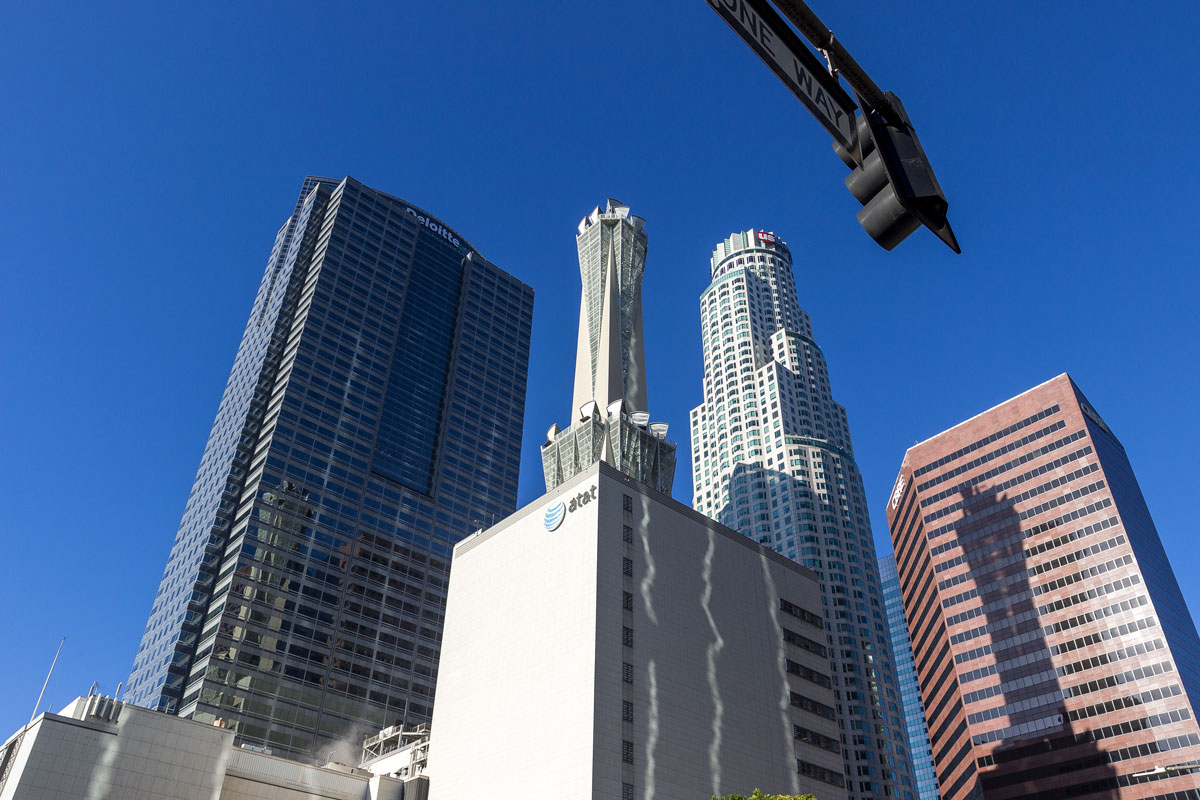
Certain buildings are quite good.
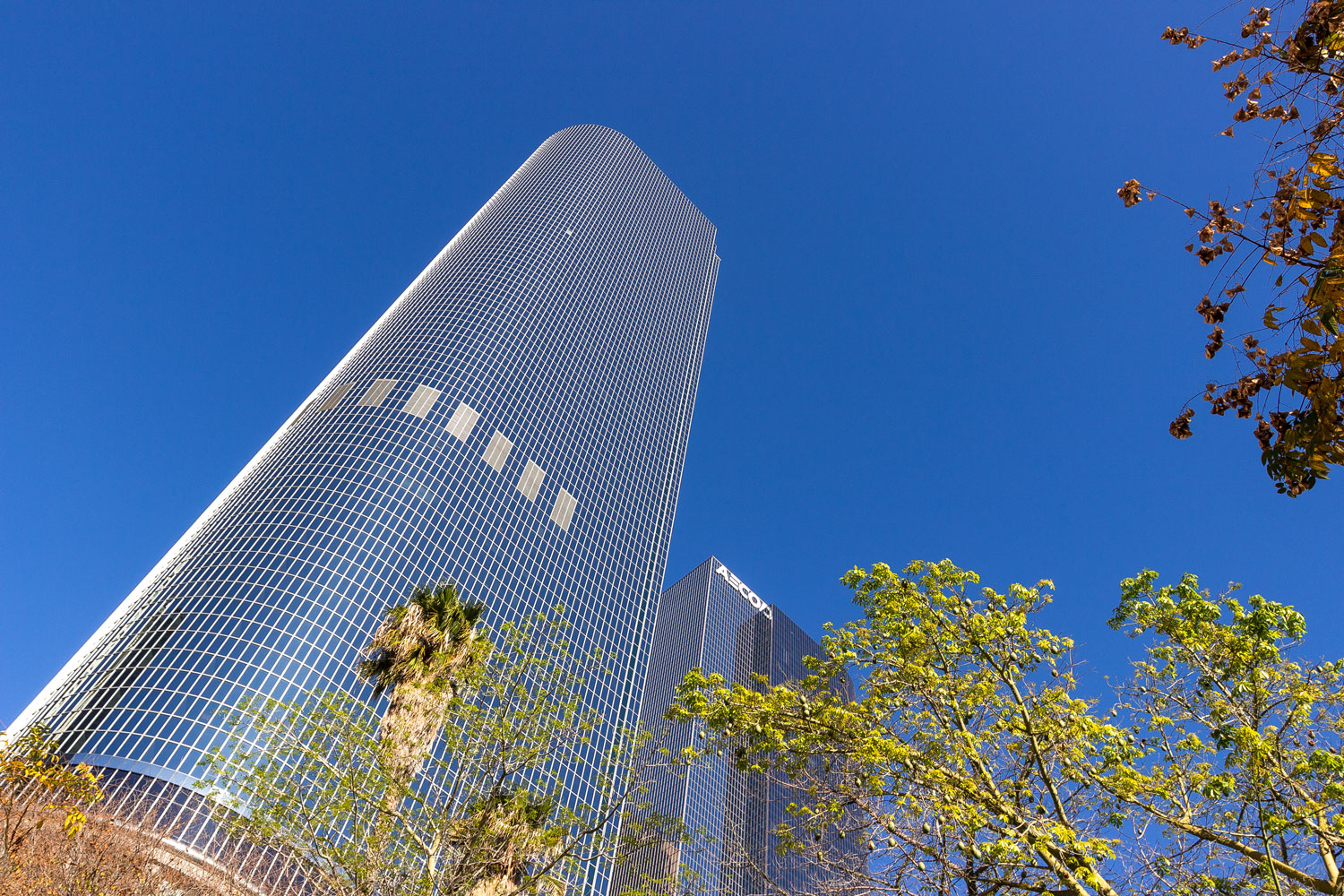
Nevertheless, Los Angeles is definitely not the city to visit for skyscrapers. Chicago or New York are much cooler in that regard.
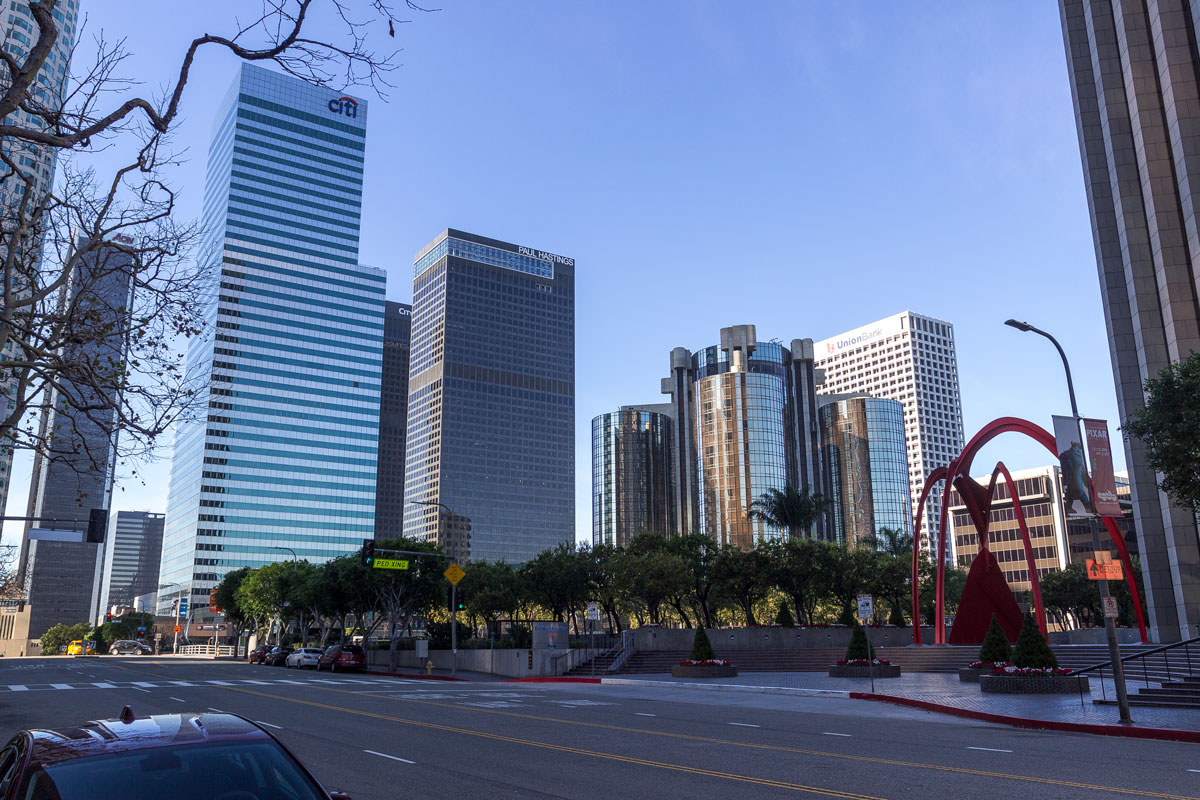
Bank of America.
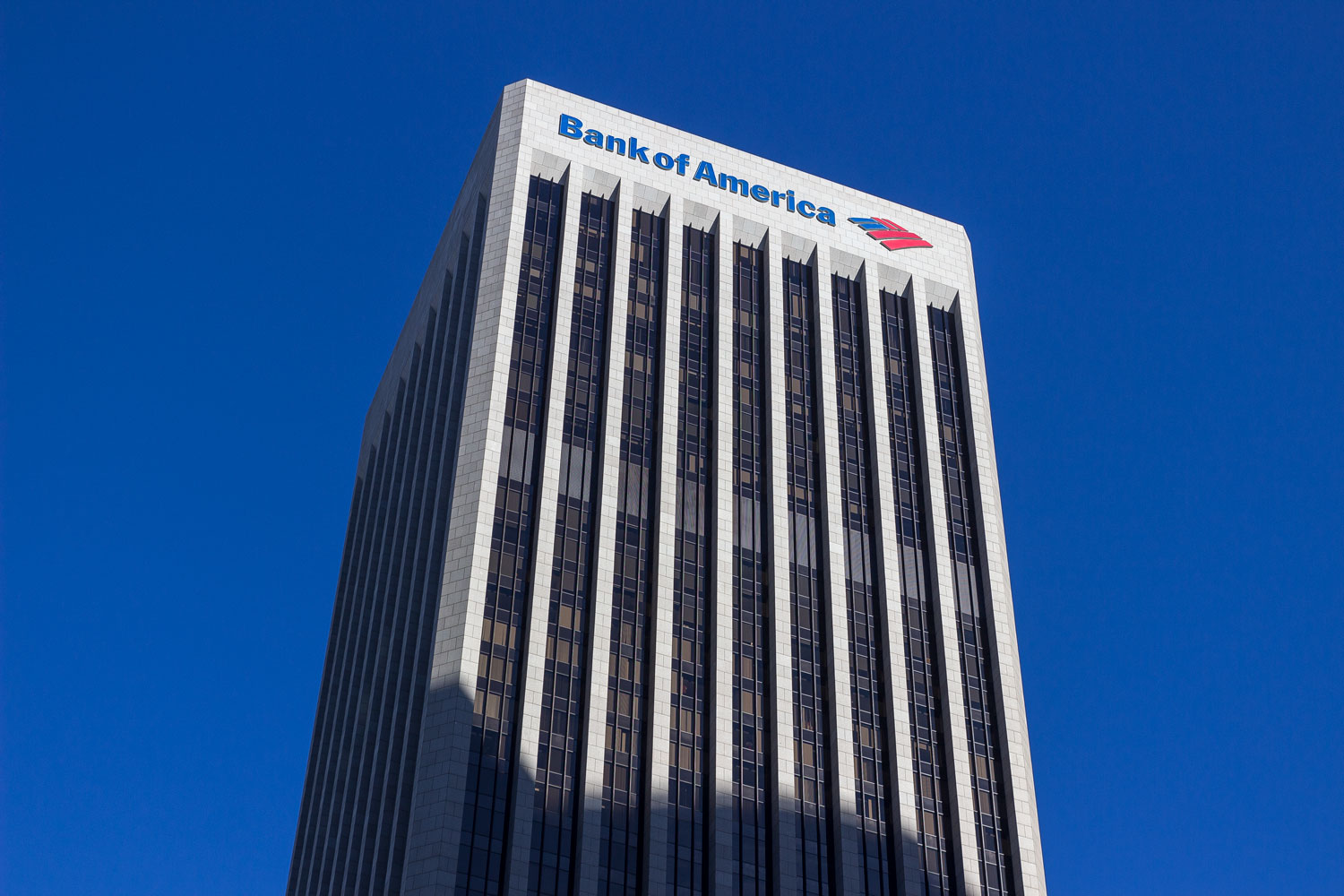
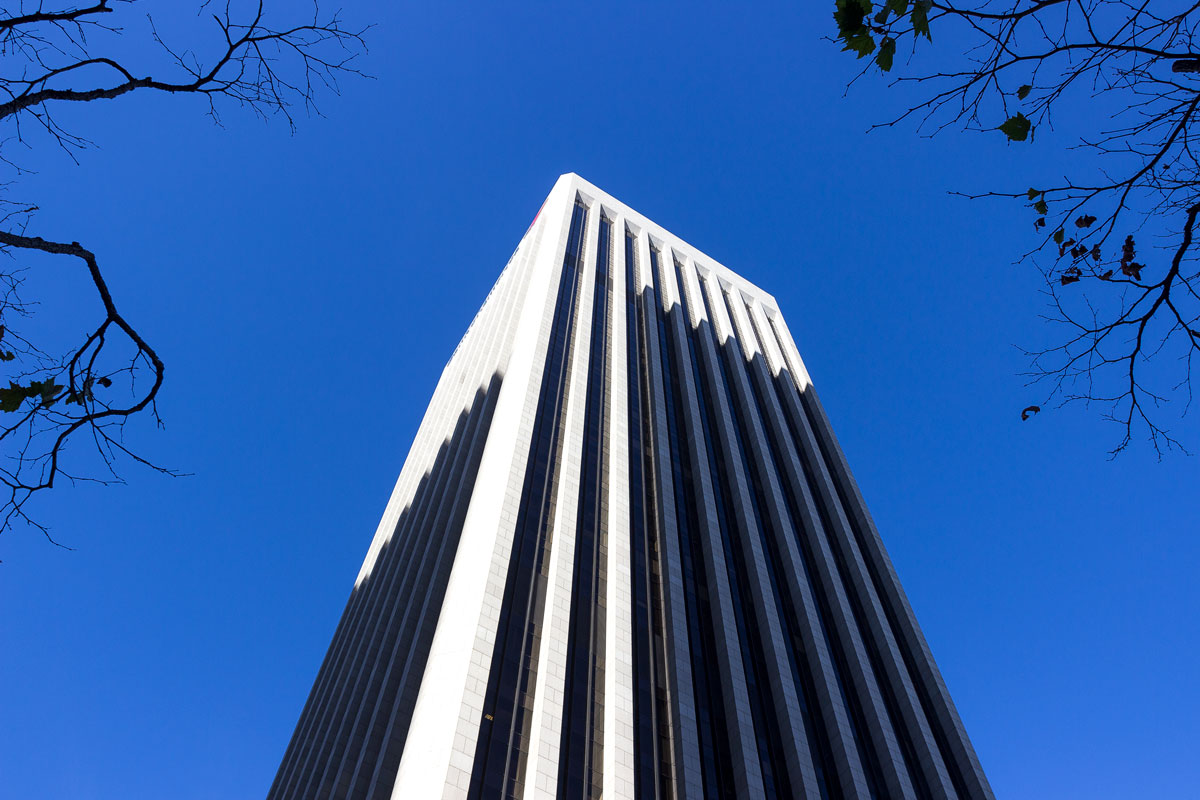
Streets.
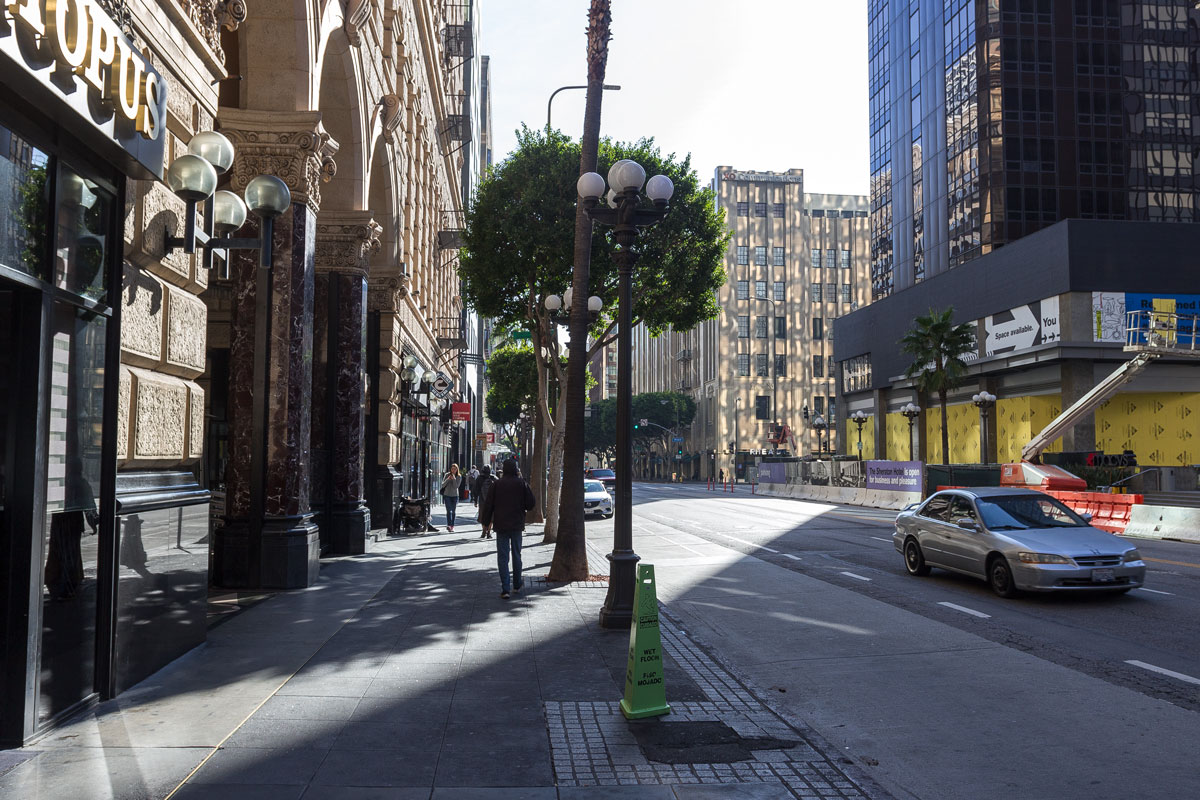


Street signs. The conciseness of the English language allows using text instead of symbols: “One Way” is much easier to write than, let’s say, “Odnostoronniye dvizheniye” in Russian.


There is a common misconception that American skyscrapers are concrete jungles. It’s not entirely true. Downtown streets have enough trees planted, and there are also several small parks. If you look at New York City, it is actually one of the greenest cities.

And here’s the real problem with any skyscrapers, from Singapore to Los Angeles — the dead, dirty alleys between buildings. Service doors for restaurants and offices, as well as trash bins, lead out here.
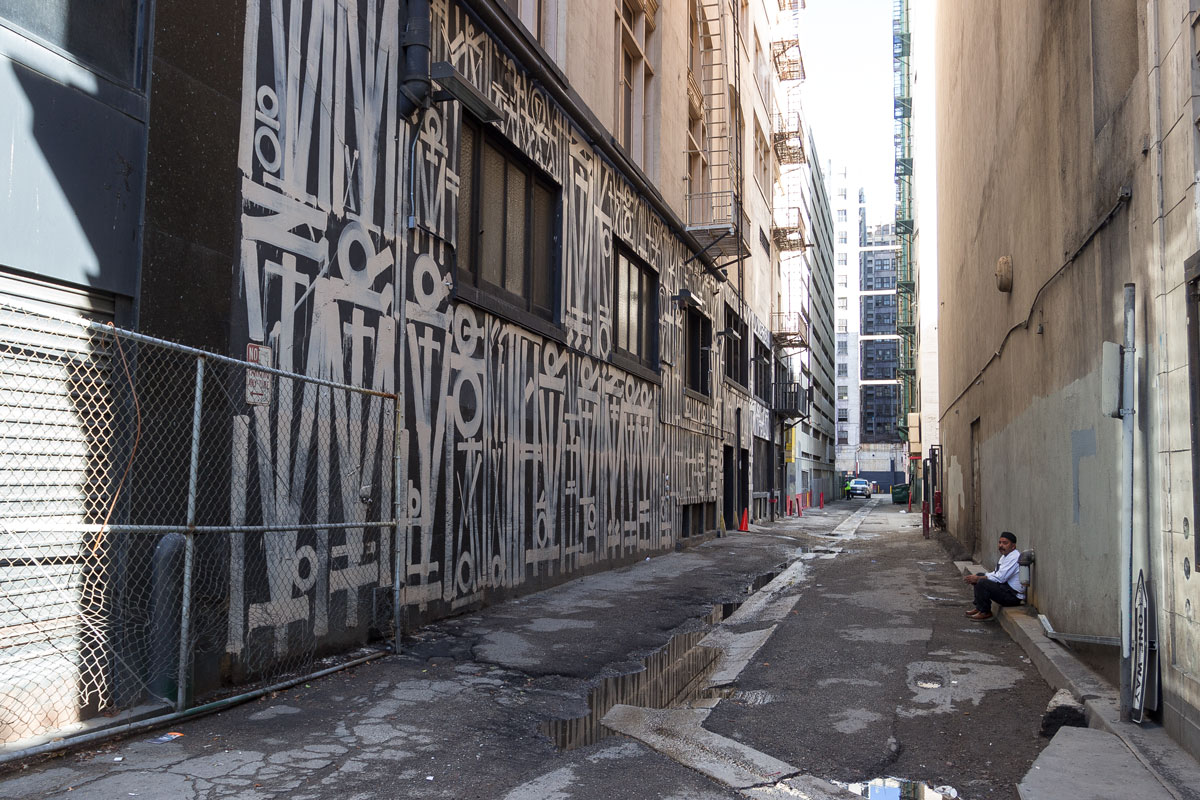
Amidst the skyscrapers in downtown, there is still preserved historical architecture. A beautiful building, American classic. The Brockman Building, constructed in 1912, formerly used as offices, now houses luxury apartments.

Vintage clothing advertisements.
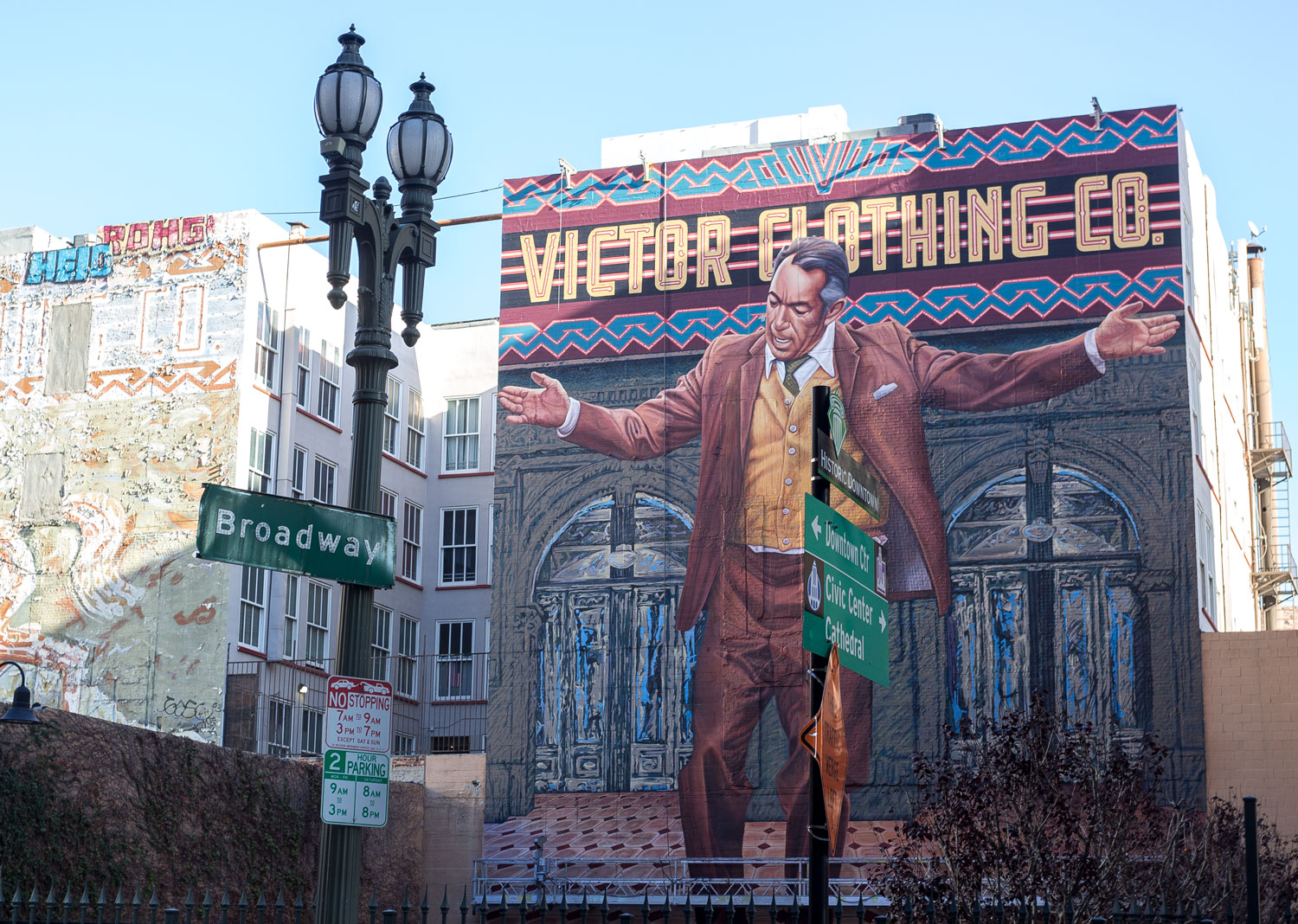
In gloomy weather, Los Angeles looks as grim as Baghdad. The holidays ended, and it turned out that the entire city center is packed with clothing and shoe stores that bear little difference from a bazaar in the Middle East.

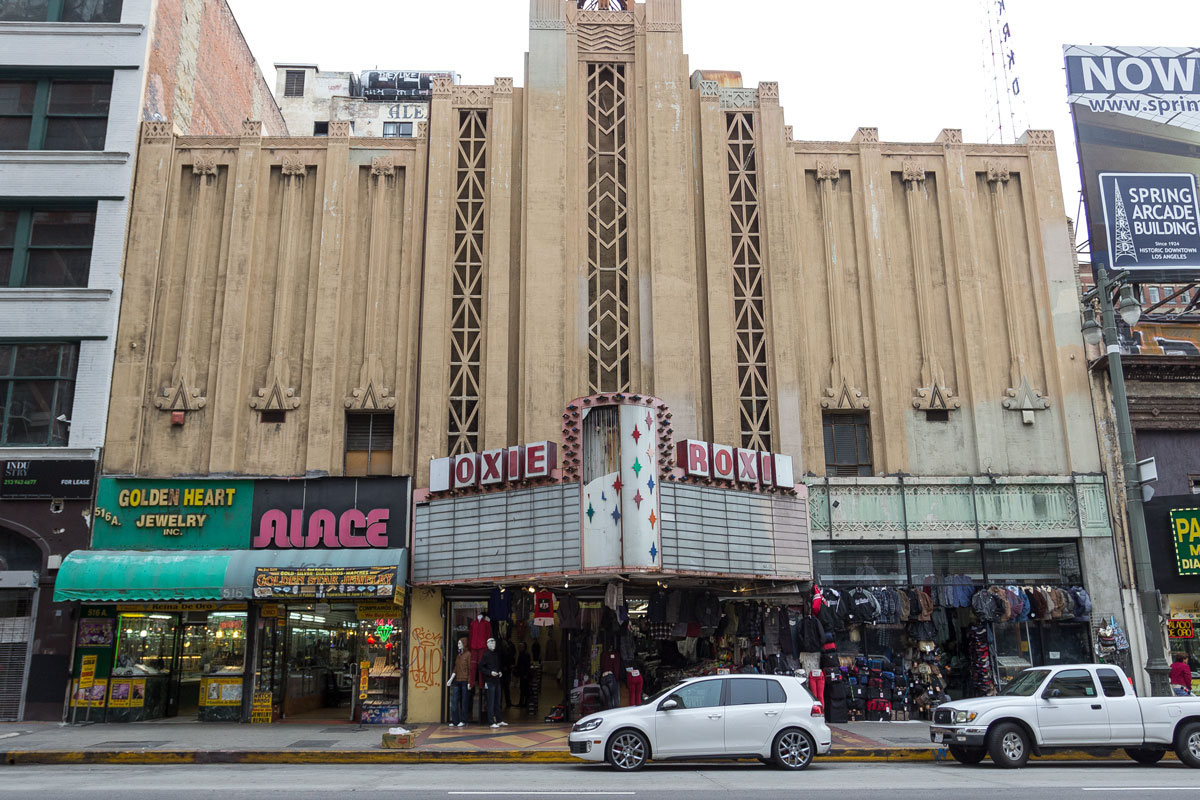
Fortunately, California is always sunny.
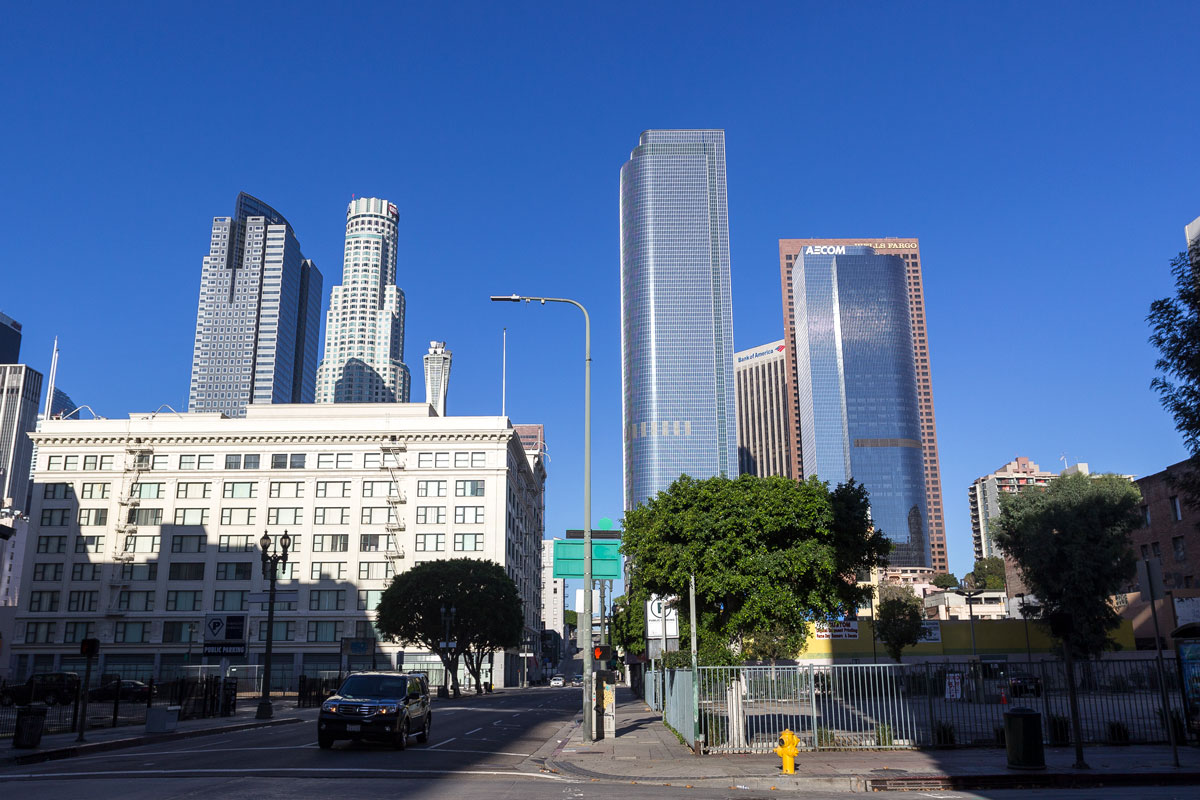

Angelino Heights
We bid farewell to the skyscrapers.
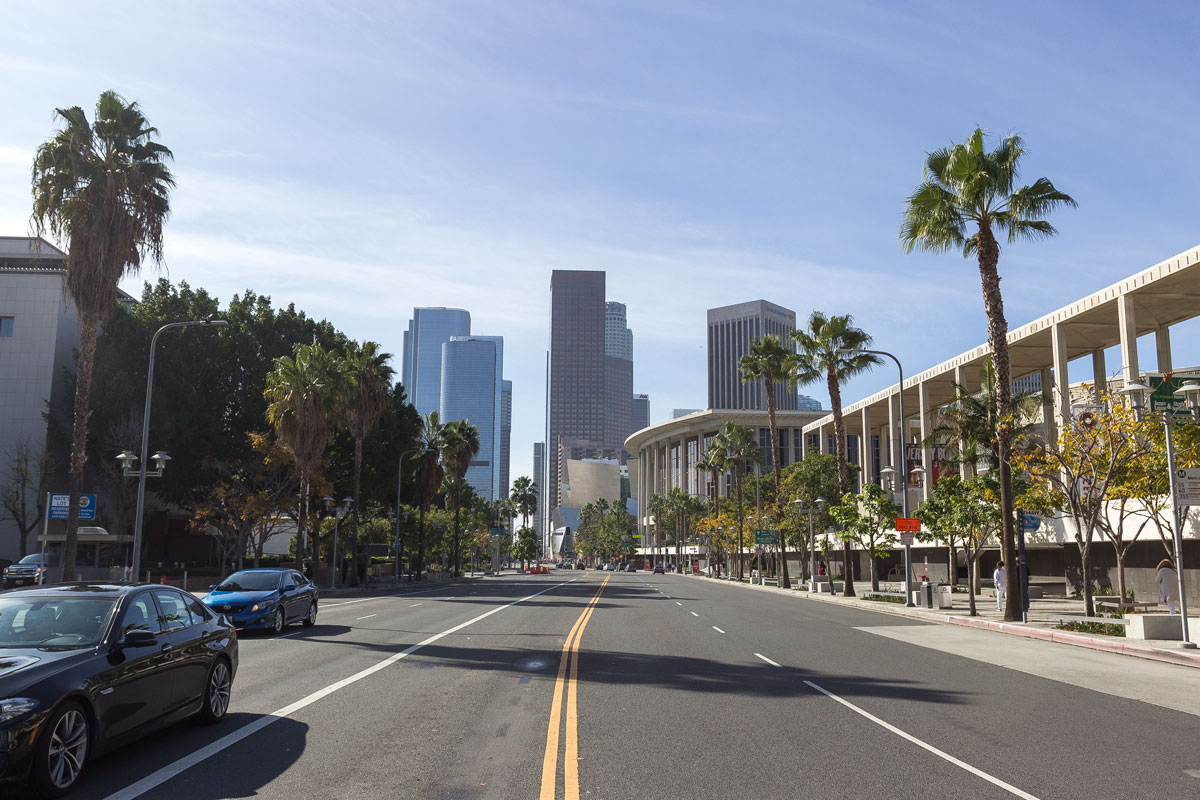
Not far from downtown, there is a truly beautiful neighborhood — Angelino Heights.
The neighborhood is separated from the city center by a high-speed highway. One has to take detours and search for an overhead crossing. Los Angeles suffers greatly from such roads that divide the city into parts.

On the way, you come across advertisements for a business training on trading marijuana.

Angelino Heights is situated on hills. From here, skyscrapers are visible on one side, and the San Gabriel mountain range on the other.
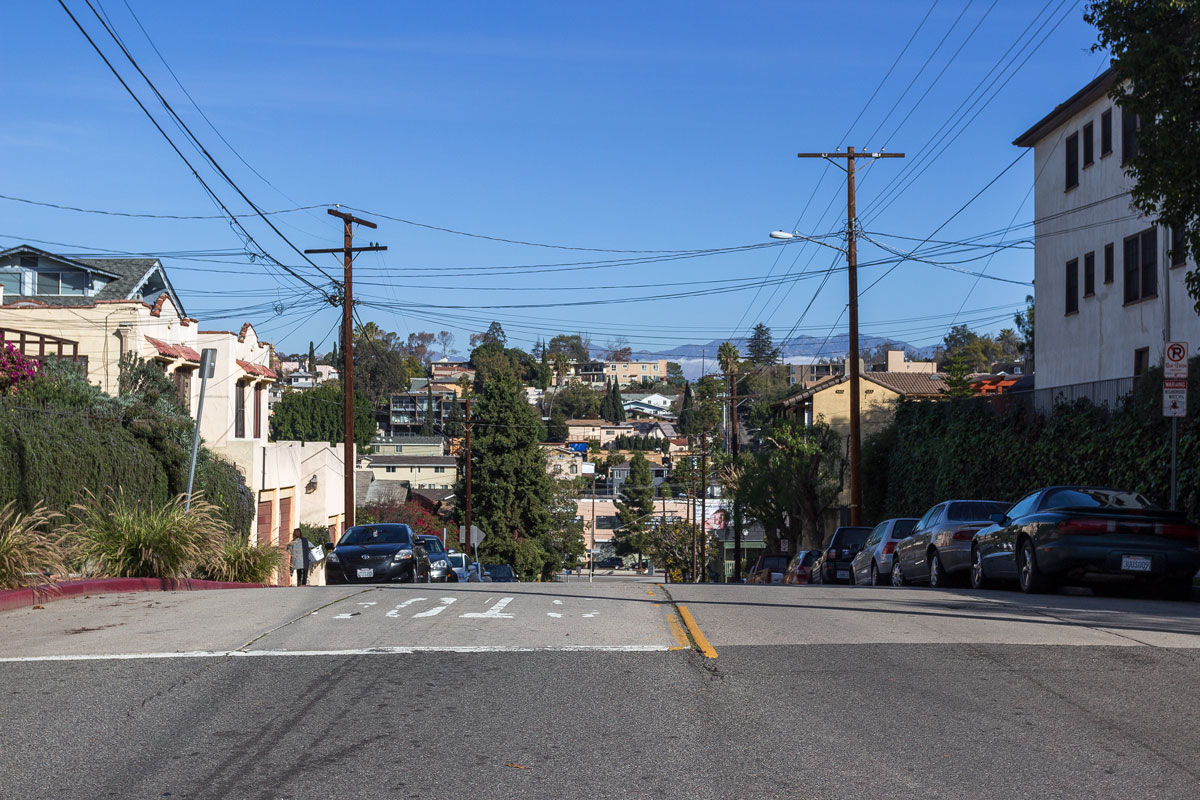
In this small neighborhood, remarkably beautiful wooden architecture has been preserved.
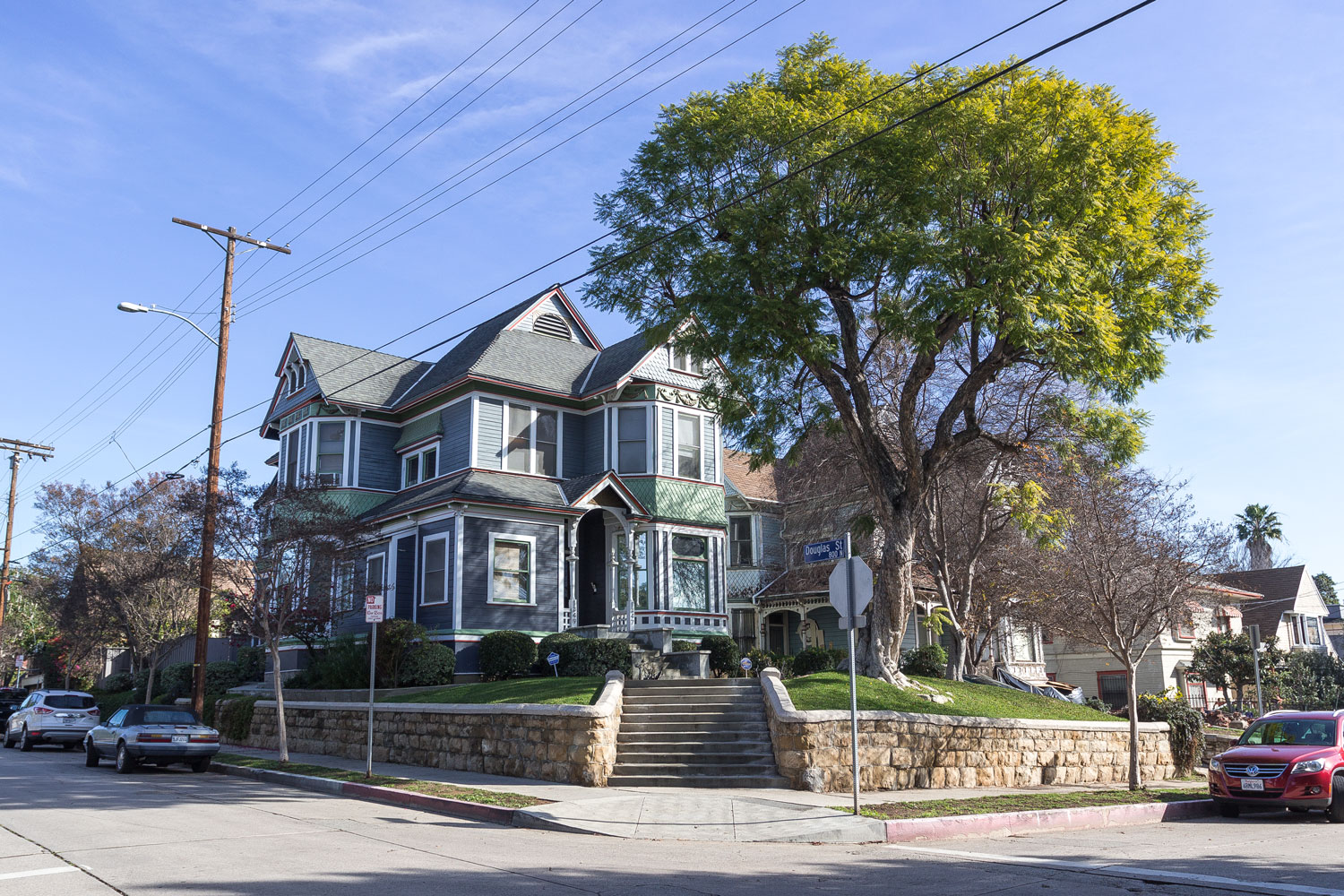
Most of these houses were built in the late 19th century. They feature Victorian-style architecture as well as an American genre called “Eastlake.”
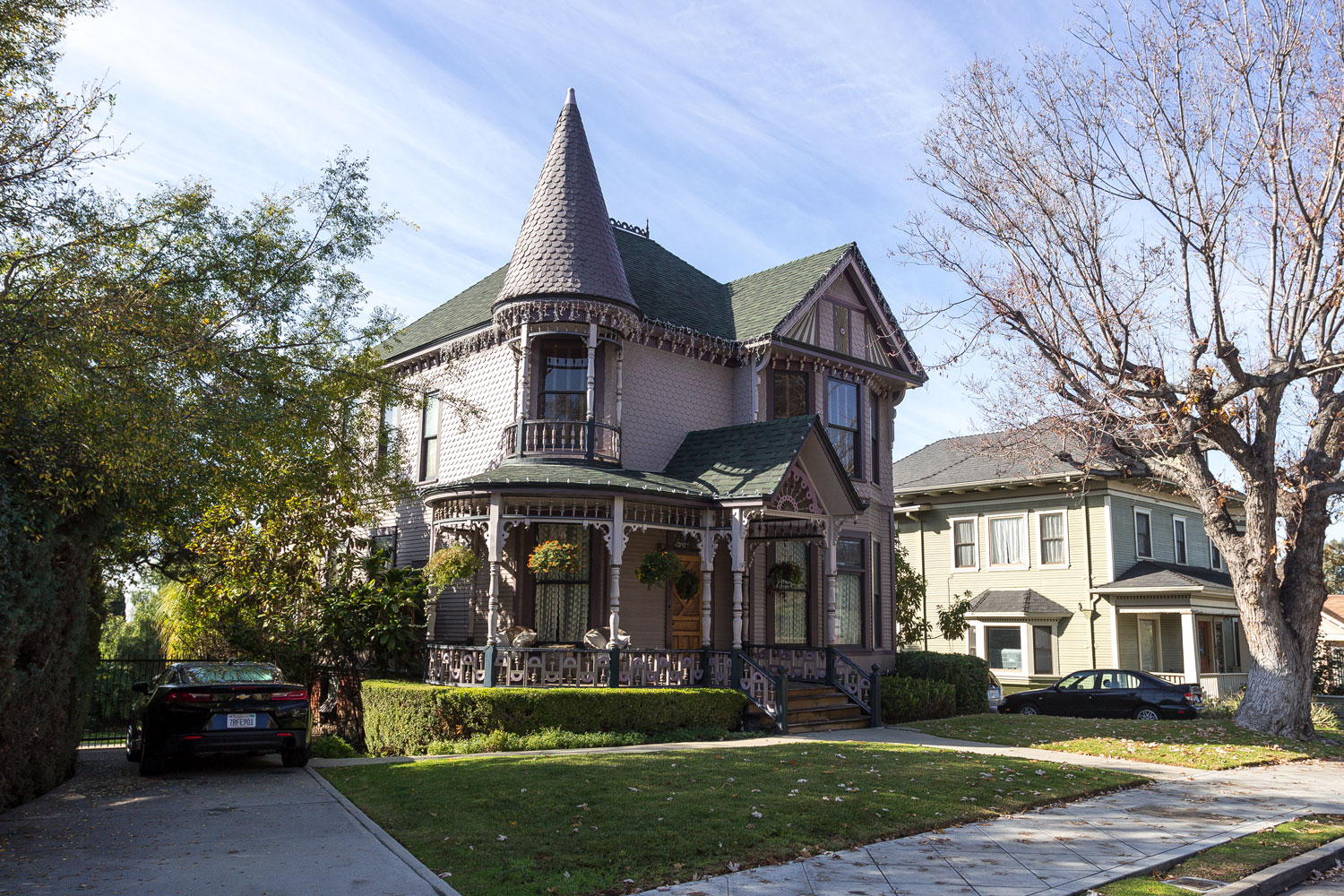
The last time I encountered similar houses was in Oxford.
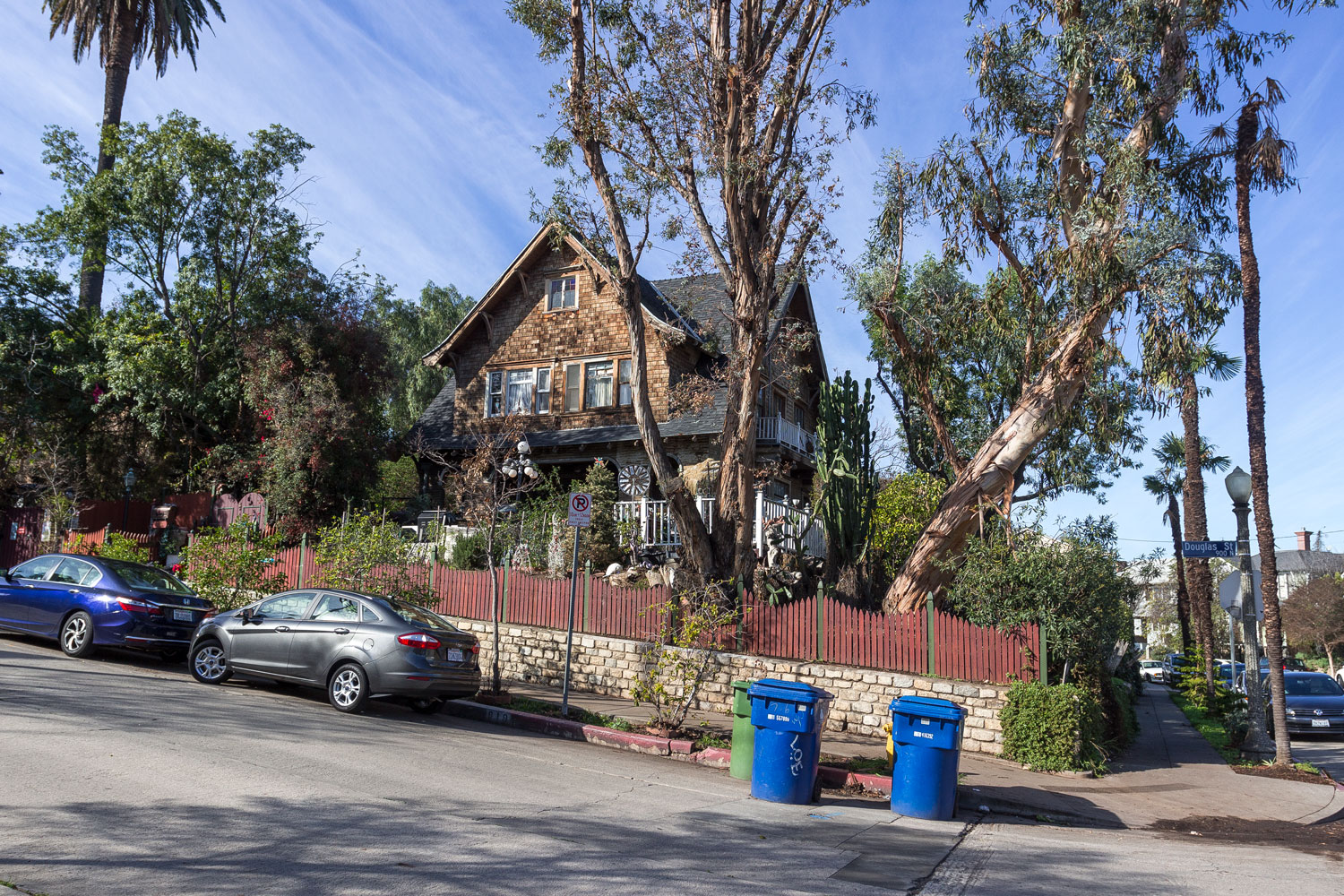
That’s America in a nutshell. Everything is mixed in this country: ghettos and tent camps border skyscrapers, while across the road, there’s a historically beautiful wooden architecture that is unimaginably stunning.
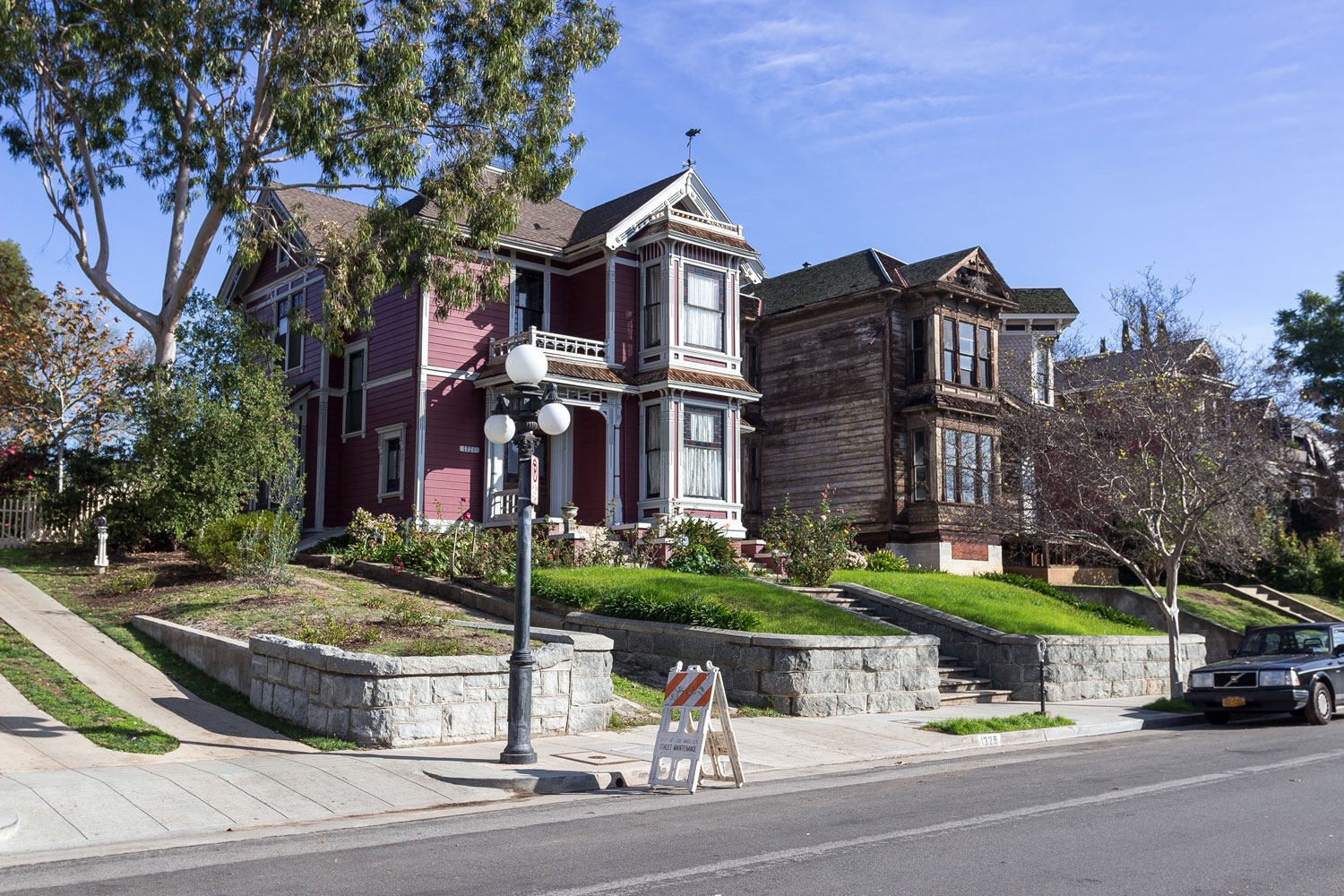
If the entire country were organized in the style of Angelino Heights, it would become another Europe. But that’s the charm of America — it is not Europe; it is a blend of cultures from all over the world. In the USA, one can find a piece of any country.
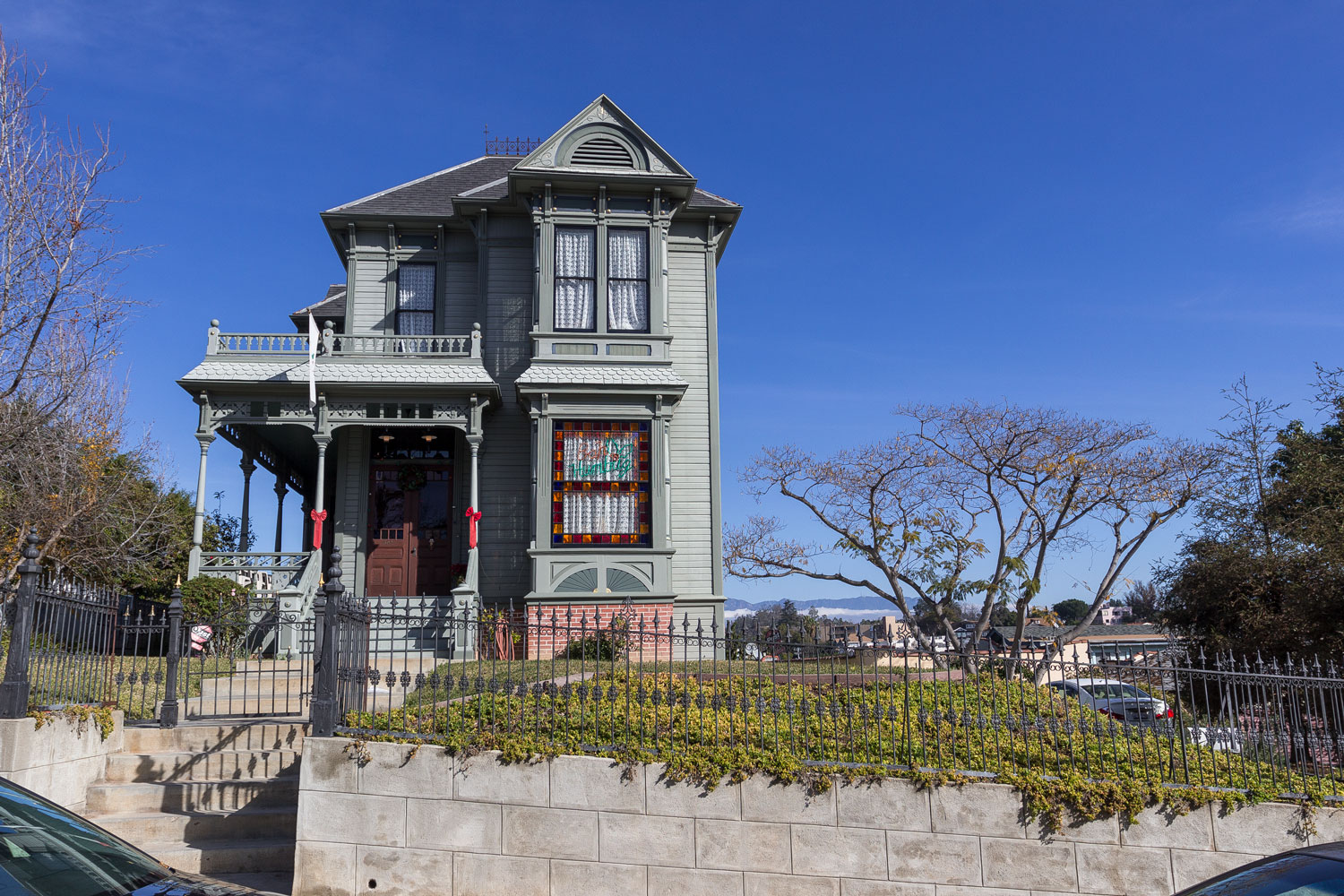
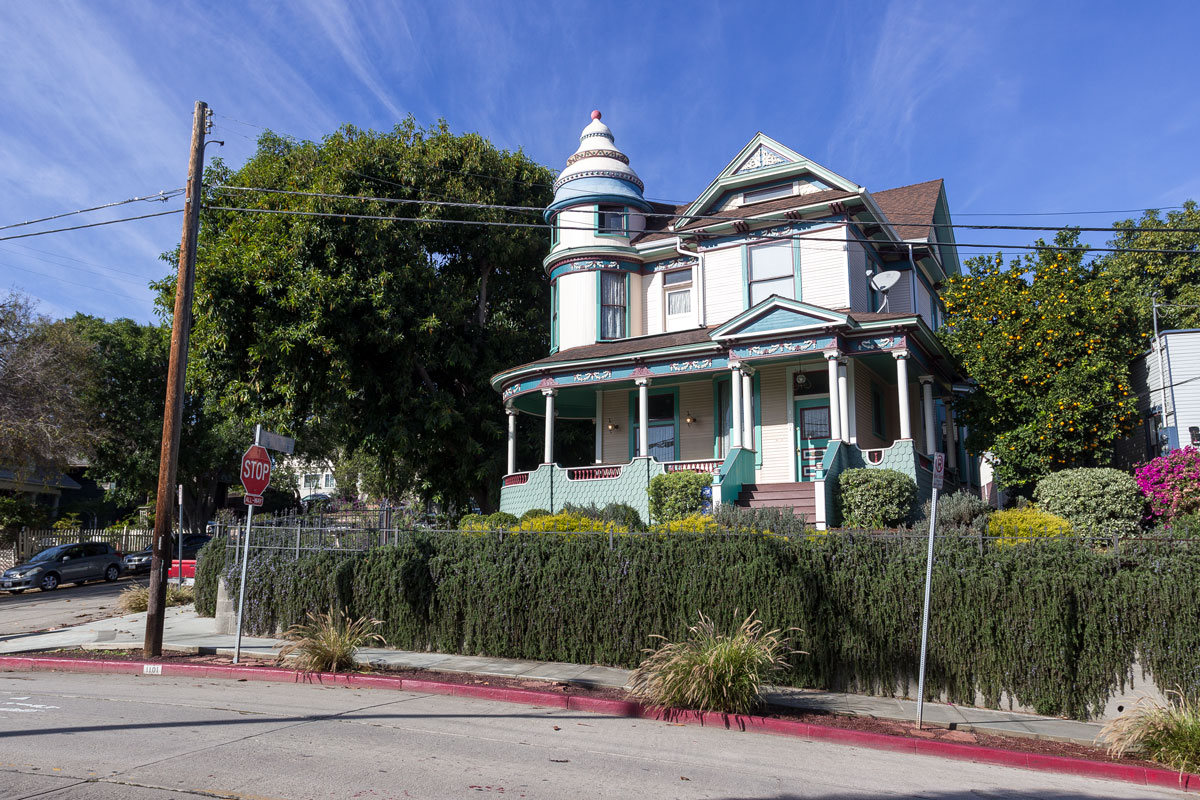
New Year decorations.
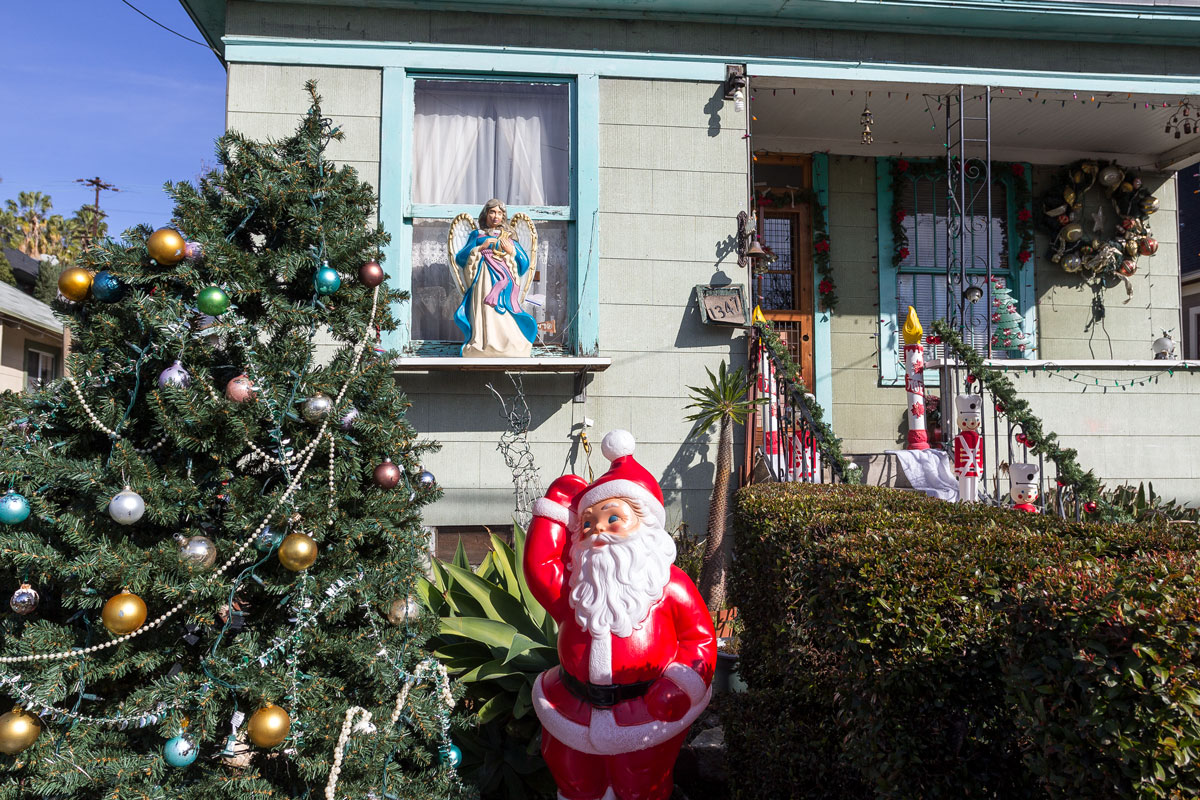
An incredible parking post.

An antique lantern.
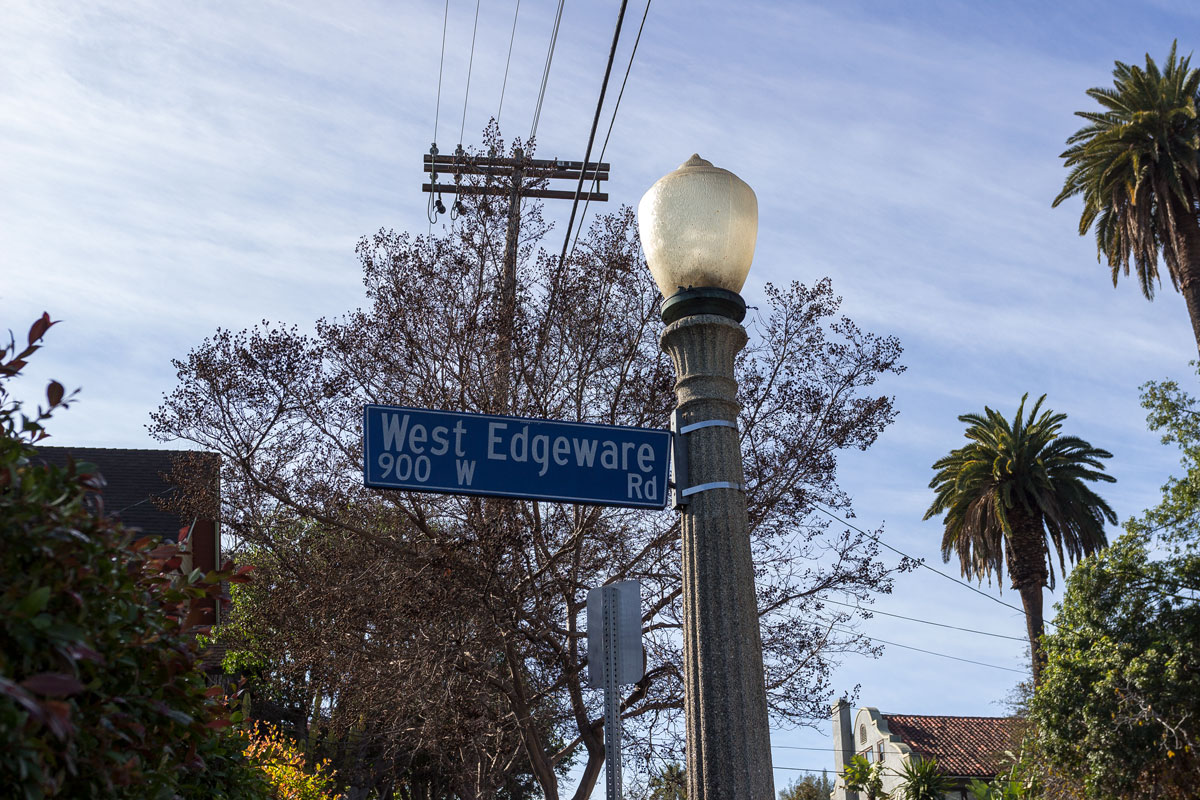
What kind of cars can be found in such a neighborhood? Of course, muscle cars.
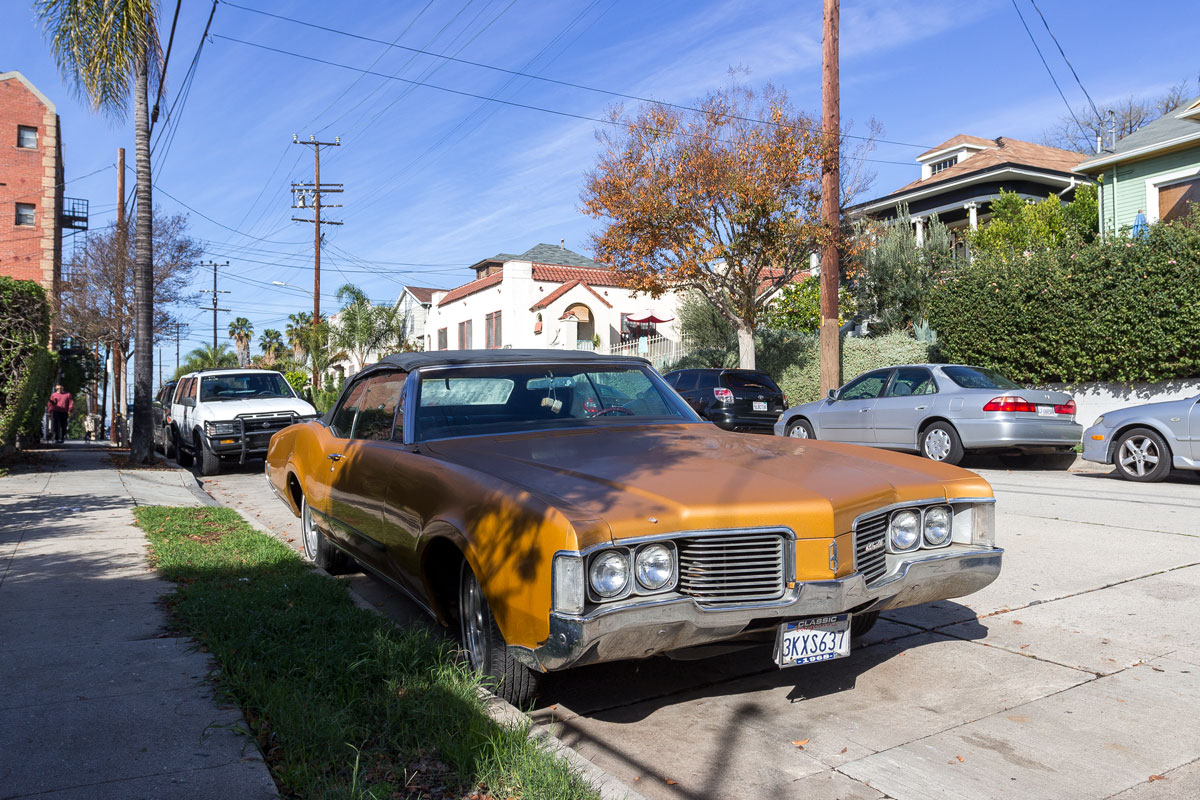
Housing in Angelino Heights is expensive but comparable to the center of world’s major capitals. A modest house in this neighborhood will cost around 1 million dollars, while an upgraded version would require between 2 to 5 million.
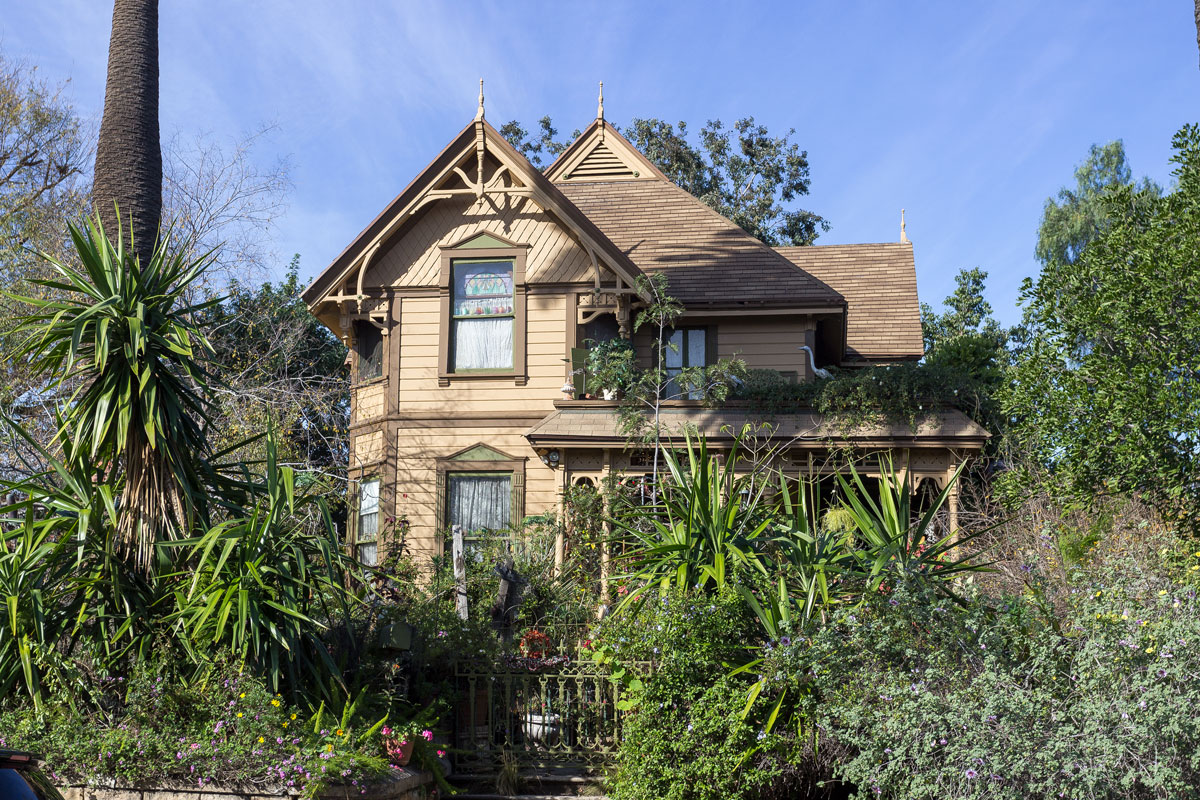
However, there is a place much wealthier — Beverly Hills.


